SPECIAL TOPIC

Unconventionals and Pas sive Seismic



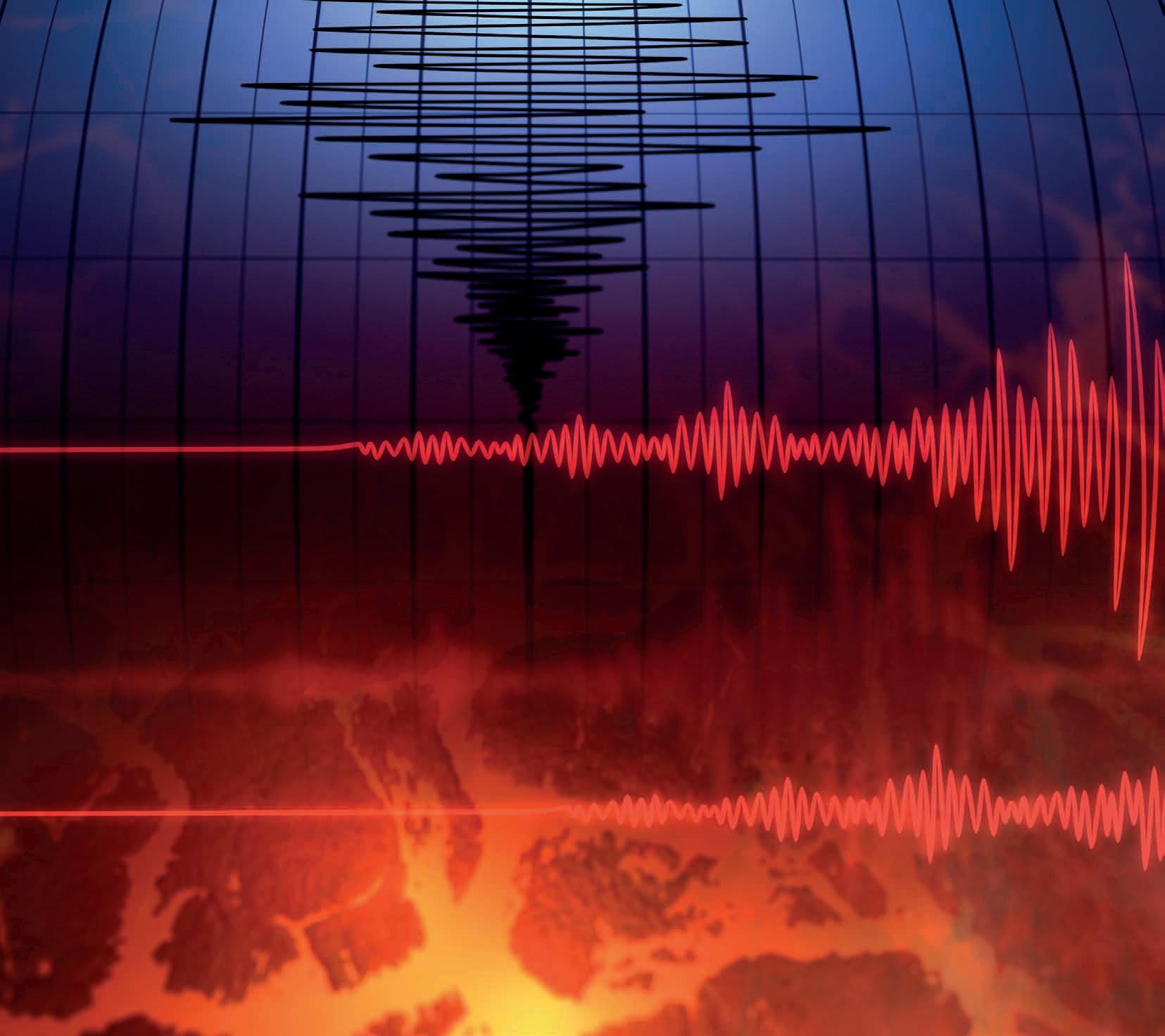
EAGE NEWS Association changes its structure





TECHNICAL ARTICLE Hydrogen and geothermal potential in Ireland

VOLUME 41 I ISSUE 4 I APRIL 2023

cgg.com/earthdata SE E THINGS DI FF ERE NT LY ALL-ROUND BETTER SUBSURFACE IMAGING Scan the QR code to see for yourself.
An EAGE Publication
CHAIR EDITORIAL BOARD
Gwenola Michaud (Gwenola.Michaud@cognite.com)
EDITOR
Damian Arnold (editorfb@eage.org)
MEMBERS, EDITORIAL BOARD
• Lodve Berre, Norwegian University of Science and Technology (lodve.berre@ntnu.no)
• Philippe Caprioli, SLB (caprioli0@slb.com)
• Satinder Chopra, SamiGeo (satinder.chopra@samigeo.com)
• Anthony Day, PGS (anthony.day@pgs.com)
• Peter Dromgoole, Retired Geophysicist (peterdromgoole@gmail.com)
• Rutger Gras, Consultant (r.gras@gridadvice.nl)
• Stephen Hallinan, CGG Stephen.Hallinan@CGG.com
• Hamidreza Hamdi, University of Calgary (hhamdi@ucalgary.ca)
• Clément Kostov, Freelance Geophysicist (cvkostov@icloud.com)
• John Reynolds, Reynolds Geo-Solutions Ltd (jmr@reynolds-geo.com)
• Peter Rowbotham, Apache (Peter.Rowbotham@apachecorp.com)
• Pamela Tempone, Eni (Pamela.Tempone@eni.com)
• Angelika-Maria Wulff, Consultant (gp.awulff@gmail.com)
EAGE EDITOR EMERITUS
Andrew McBarnet (andrew@andrewmcbarnet.com)
PUBLICATIONS MANAGER
Martha Theodosiou (mtu@eage.org)
MEDIA PRODUCTION
Saskia Nota (firstbreakproduction@eage.org)
PRODUCTION ASSISTANT
Ivana Geurts (firstbreakproduction@eage.org)
ADVERTISING INQUIRIES corporaterelations@eage.org
EAGE EUROPE OFFICE
Kosterijland 48
3981 AJ Bunnik
The Netherlands
• +31 88 995 5055
• eage@eage.org
• www.eage.org
EAGE MIDDLE EAST OFFICE
EAGE Middle East FZ-LLC
Dubai Knowledge Village
Block 13 Office F-25 PO Box 501711
Dubai, United Arab Emirates
• +971 4 369 3897
• middle_east@eage.org
• www.eage.org
EAGE ASIA PACIFIC OFFICE
UOA Centre Office Suite 19-15-3A
No. 19, Jalan Pinang
50450 Kuala Lumpur
Malaysia
• +60 3 272 201 40
• asiapacific@eage.org
• www.eage.org
EAGE AMERICAS SAS
Edificio Centro Ejecutivo Santa Barbara
Av. Cra. 19 #118-95 - Office: 501
• +57 310 8610709
• americas@eage.org
• www.eage.org
EAGE MEMBERS CHANGE OF ADDRESS NOTIFICATION
Send to: EAGE Membership Dept at EAGE Office (address above)
FIRST BREAK ON THE WEB www.firstbreak.org
ISSN 0263-5046 (print) / ISSN 1365-2397 (online)
78
Microseismic Examples, Bakken Formation, Williston Basin

93 P and S wave seismic imaging are needed in CCS reservoir monitoring Dr. Bob Hardage CO2
94 Calendar
cover: Latest innovations in microsemisic data will be showcased.
FIRST BREAK I VOLUME 41 I APRIL 2023 1 Editorial Contents 3 EAGE News 17 Personal Record Interview 18 Monthly Update 20 Crosstalk 23 Industry News Technical Articles 33 A workflow for quantitative seismic fracture characterisation of hydrocarbon reservoirs Debasis Chaudhuri and Ankur Roy 41 Overview of hydrogen and geostorage potential in Ireland Joseph M. English and Kara L. English Special Topic: Unconventionals and Passive Seismic 51 Bringing change to shale reservoir development Tom Davis 56 Performance and outlook for the SADAR array network at the Newell County facility Paul A. Nyffenegger, Jian Zhang, Elige B. Grant, Derek Quigley, Kevin D. Hutchenson, Mark A. Tinker, Don C. Lawton and Marie Macquet 63 Potential production gains of multi-stage fractured wells in shale plays: sensitivity of well performance to changes in design parameters assessed with fast and accurate Gaussian solutions Ruud Weijermars 71 Sensitivity tests performed on passive low frequency seismic (LFS) data acquired in the Central North Sea to delineate hydrocarbon deposits Roy P. Bitrus, Vasilii Ryzhov, Dmitrii Ryzhov, Ilshat Sharapov, Sergey Feofilov and Evgeny Smirnov 78 Microseismic Examples, Bakken Formation, Williston Basin Stephen A. Sonnenberg 85 Analysis of hypotheses of reservoir saturation issues in the Achimov formation of Western Siberia Victor Gabrilyants, Bikbaev Fidan and Shegay Vadim Feature: WhatsUp!
BREAK ®
FIRST
European Association of Geoscientists & Engineers
Board 2022-2023
Near Surface Geoscience Circle
Esther Bloem Chair
Andreas Aspmo Pfaffhuber Vice-Chair

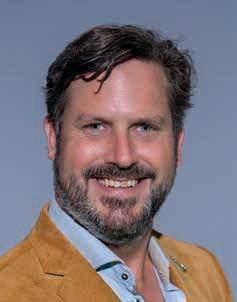

Micki Allen Contact Officer EEGS/North America
Adam Booth Committee Member
Hongzhu Cai Liaison China
Deyan Draganov Technical Programme Officer
Wolfram Gödde Liaison First Break
Hamdan Ali Hamdan Liaison Middle East
Vladimir Ignatev Liaison Russia / CIS
Musa Manzi Liaison Africa
Myrto Papadopoulou Young Professional Liaison
Catherine Truffert Industry Liaison

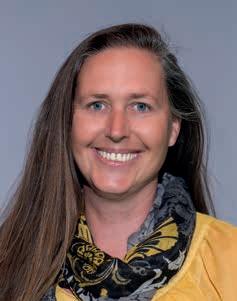
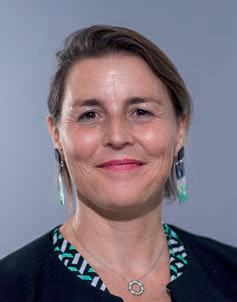
Panagiotis Tsourlos Editor in Chief Near Surface Geophysics
Florina Tuluca Committee member
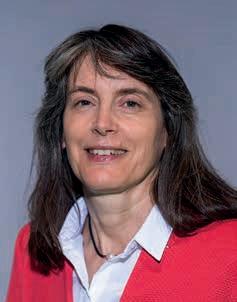
Oil & Gas Geoscience Circle
Lucy Slater Chair
Yohaney Gomez Galarza Vice-Chair
Michael Peter Suess Immediate Past Chair; TPC
Erica Angerer Member
Wiebke Athmer Member
Juliane Heiland TPC
Tijmen Jan Moser Editor-in-Chief Geophysical Prospecting
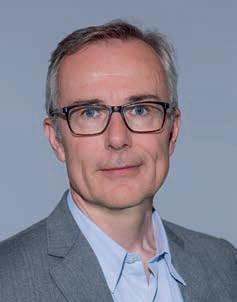
Adeline Parent WGE SIC Liaison
Matteo Ravasi YP Liaison
Jonathan Redfern Editor-in-Chief Petroleum Geoscience
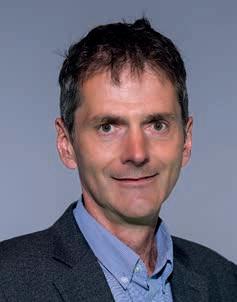
Giovanni Sosio DET SIC Liaison
Aart-Jan van Wijngaarden Technical Programme Officer
SUBSCRIPTIONS
First Break is published monthly. It is free to EAGE members. The membership fee of EAGE is € 80.00 a year including First Break, EarthDoc (EAGE’s geoscience database), Learning Geoscience (EAGE’s Education website) and online access to a scientific journal.
Companies can subscribe to First Break via an institutional subscription. Every subscription includes a monthly hard copy and online access to the full First Break archive for the requested number of online users.
Orders for current subscriptions and back issues should be sent to EAGE Publications BV, Journal Subscriptions, PO Box 59, 3990 DB, Houten, The Netherlands. Tel: +31 (0)88 9955055, E-mail: subscriptions@eage.org, www.firstbreak.org.
First Break is published by EAGE Publications BV, The Netherlands. However, responsibility for the opinions given and the statements made rests with the authors.
COPYRIGHT & PHOTOCOPYING © 2023 EAGE
All rights reserved. First Break or any part thereof may not be reproduced, stored in a retrieval system, or transcribed in any form or by any means, electronically or mechanically, including photocopying and recording, without the prior written permission of the publisher.
PAPER
The publisher’s policy is to use acid-free permanent paper (TCF), to the draft standard ISO/DIS/9706, made from sustainable forests using chlorine-free pulp (Nordic-Swan standard).
2 FIRST BREAK I VOLUME 41 I APRIL 2023
Caroline Le Turdu Membership and Cooperation Officer
Peter Rowbotham Publications Officer
Pascal Breton Secretary-Treasurer
Aart-Jan van Wijngaarden Technical Programme Officer
Esther Bloem Chair Near Surface Geoscience Circle
Lucy Slater Chair Oil & Gas Geoscience Circle
Edward Wiarda Vice-President
Jean-Marc Rodriguez President
Maren Kleemeyer Education Officer
Members vote to add Sustainable Energy as one of three Circles to replace old Divisions
EAGE members have passed a proposal from the Board to replace the existing two divisional structure of the Association, introducing instead three Circles which are felt to be more representative of the organisation in the energy transition era.
The change was passed at a Special Members Meeting on 16 February 2023 approving the creation of three Circles, namely Oil and Gas Geoscience Circle, Near-Surface Geoscience Circle and Sustainable Energy Circle.
At the meeting EAGE president Jean-Marc Rodriguez together with the vice-president Edward Wiarda introduced the modifications to the EAGE Constitution needed in line with these changes.


EAGE president Jean-Marc Rodriguez said: ‘The Board wanted to step away from the Divisions nomenclature, which to many feels dividing and implies having separate “silos” without appropriate overlap between the areas of interest that they represent. We carefully considered several possible options and concluded that the term Circle best encompasses the idea of multi-disciplinary collaboration and inclusivity.’
Edward Wiarda explained in more detail why the name Circle was chosen and the idea behind the name: ‘Circles embody the spirit of who we want to be as an Association – inclusive and giving members the feeling of being part of a single EAGE, with circles representing unity and a round table at which there is a place
for every member. Moreover, through visualization by Venn diagrams our three Circles – Oil & Gas, Near-Surface Geoscience and Sustainable Energy – now provide a well-rounded framework that allows for an increasing overlap between two or even three circles with time and a stepping stone for the energy transition within EAGE.’
According to Wiarda, the EAGE energy transition can be seen as the movement of the Near-Surface Geoscience and Oil & Gas Geoscience Circles towards the Sustainable Energy Circle, with increasing overlap between these Circles, as the global ‘new energy’ industry keeps growing. It also showed that, at this juncture, parts of the Oil & Gas and Near-Surface Geoscience Circles are already active in the fields of sustainability and energy transition, overlapping our new Sustainable Energy Circle. This proved the inclusiveness of the Circle concept.
‘The overlap zones,’ Wiarda said, ‘represent joint collaboration, synergy, integration, knowledge sharing and efficiencies (read: cost reduction), across geoscience and engineering disciplines and specialisations, regions, and industries. It is in these overlap sweet spots where
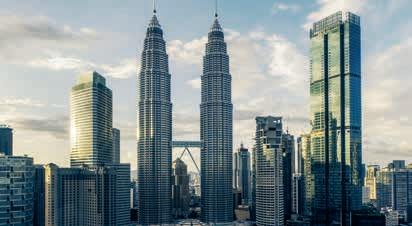

members, technologies and solutions, developed in one Circle, meet the members, applications and challenges of the other (two) Circles. Obviously, the shortterm focus of the Board is on stimulating and supporting all EAGE Communities, but especially those active within these overlap zones.’
Jean-Marc Rodriguez added: ‘We appreciate that this may appear quite abstract, and we feel the responsibility to



FIRST BREAK I VOLUME 41 I APRIL 2023 3
meeting 04 SE
energy transition conference 11 Strategic
set for Vienna 14 HIGHLIGHTS
Montevideo hosts offshore resources
Asia
programme
President Jean-Marc Rodriguez at the 2022 AGMM.
quantify, materialise and realise this concept of Circle overlap into the real world.’
Further steps and timeline will be announced during the Annual General Meeting for Members (AGMM) in Vienna in June when the leadership of the Sustainable Energy Circle, elected in the upcoming Ballot, will be introduced. Every member is invited to join multiple Circles and to start getting involved in their joint activities and communities.
The reorganisation was signalled at the 2022 AGMM in Madrid when the Board indicated that the Divisional structure would be reconsidered in order to be more inclusive. Once the concept of Circles and a Sustainable Energy Circle had been agreed, the necessary steps were launched to bring the new framework into being. A members vote was needed to approve the changes to the Association’s Constitution revising its references to Divisions.
Throughout January and February 2023 members were invited to cast their vote. At the Special Members Meeting on 16 February held online, the proposals were discussed before the final approval was confirmed.
Jean-Marc Rodriguez concluded the meeting: ‘The EAGE Board would like to thank all members who participated in the Special Members Meeting and to all members who voted on the proposed changes to the Constitution.’
Ahead of our Annual General Meeting for Members (AGMM) in Vienna in June, the election of EAGE Board members will be held in which all members are entitled and encouraged to vote.
The elections are the best opportunity for members to have a say in how the Association is run. This year the election will invite votes for the positions of Vice-President, Vice-Chair Oil and Gas
Geoscience Circle, Chair Sustainable Energy Circle, Vice-Chair Sustainable Energy Circle and Publication Officer, to be filled from July 2023. More information about the candidates and the election dates are available on our website. An invitation email will be sent to all members with instructions on how to vote in this year’s Ballot. Be sure to participate.
The AGMM will be held on Wednesday 7 June during the EAGE Annual Conference & Exhibition in Vienna. This is when the Board reports on the previous year’s activities and discusses topics of significance to members. The meeting provides the most important opportunity for members to have their say, interact with the Board and contribute to the future of the Association. Visit www.eage.org/about eage/agmm for more information.
Uruguay to host first EAGE South Atlantic offshore resources conference

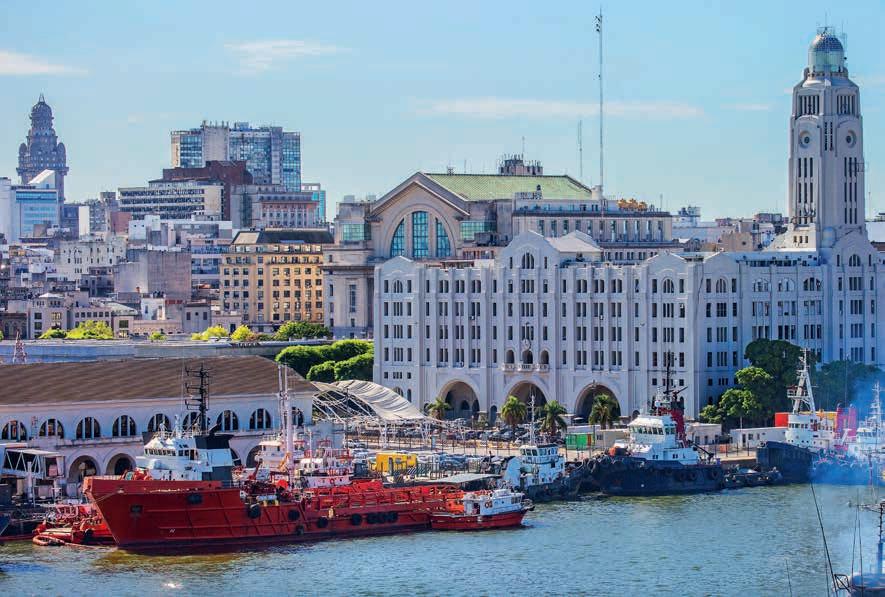
The First EAGE Conference on Offshore Energy Resources in the South Atlantic will be an in person meeting in Montevideo, Uruguay, on 20-22 September 2023. The timing is perfect given the recent significant light oil discoveries in the Orange Basin, offshore Namibia, associated with the TotalEnergies, Venus-1 and Shell, Graff-1 wells. These finds have led to revived exploratory interest in the conjugate offshore margins of Northern Argentina, Uruguay, and Southern Brazil.
In the current global political and economic climate, focusing on energy security, efficiency and environmentally responsible exploration have become critical. Aiming to contribute towards achieving these goals, the conference should facilitate and encourage sharing of experience by regulators, NOCs, IOCs, service providers as well as research and academic institutes working in the region.
The event will provide an excellent platform to share knowledge, learn from each other, have round table discussions and understand the challenges and the potential opportunities that this margin
hides. In combination with a strong technical programme, the conference will facilitate discussions and participation through several interactive sessions, panel debates and networking events. The South Atlantic has an important role to play in providing future energy resources in an environmentally responsible manner and
this event is designed to provide an ideal forum to define the best way forward. Join the discussion by submitting your abstracts before 5 May 2023.
Find out more!
4 FIRST BREAK I VOLUME 41 I APRIL 2023 EAGE NEWS
Centre of Montevideo.
DUG INSIGHT RELIABLE. EFFICIENT. SCALABLE.
Modern interpretation workflows need modern software. Geoscientists must adapt to increasing data volumes and evolving technology requirements. Leaders must onboard new team members smoothly, and have a comprehensive set of tools to tackle any challenge across land, marine, and ocean-bottom surveys.







DUG Insight is a full-service solution for qualitative interpretation, visualisation, 2D/3D/time-lapse/prestack amplitude analysis and rock-property inversion, advanced seismic-data time-processing and depth-imaging, and FWI—this includes DUG’s revolutionary multi-parameter high-frequency FWI imaging technology. DUG Insight feels like a single package designed by a single team. Because it is.
Let DUG Insight's state-of-the-art technology help you make your next discovery.



•ISO 27001• OC M PASSASSURANCESERV SEC •ISO 9001• OC M PASSASSURANCESERV SEC
dug.com/insight For more information contact info@dug.com
Learning continues in latest Arabian Plate core workshop
Frans S. van Buchem (King Abdullah University of Science and Technology, KAUST), Khalid Alhmoud (Saudi Aramco) and Jeroen Kenter (TotalEnergies) report on the EAGE 8th Arabian Plate Core Workshop, held on 28-30 November 2022 in Dhahran, Saudi Arabia.
This long-running workshop focused on the prolific Mid Jurassic to Lower Cretaceous stratigraphic interval, and was well attended by 60 geoscientists and petrophysicists from industry (Saudi Aramco, ADNOC, KOC, TotalEnergies, CNPC) and academia (KAUST and KFUPM from Saudi Arabia, ENSEGID and CEREGE from France).
While the Middle East has been producing some of the world’s most prolific hydrocarbon reservoirs for more than 50 years, regional understanding of stratigraphy, architecture and resulting source rock, reservoir and seal partitioning still need improvements to meet the demands for optimal water drive, EOR, CCS and near field exploration targeting stratigraphic trapping concepts. The strong interest and lively debates during the workshop confirmed this need and the motivation to deliver these.
The main objective of the workshop was to provide access to a selection of core material from different countries and discuss these in the context of a conceptual regional stratigraphic model which resulted partly from the 4th EAGE core workshop in 2012, and completed with insights of the recent literature (Figures 1 & 2). This framework provided a unique
basis for the discussion of stratigraphic architecture, facies models, rock types and their significance for source, reservoir and seal presence at the scale of the Arabian Plate.
Cores covering the Early Jurassic to Early Cretaceous interval were provided by KOC, Saudi Aramco, ADNOC and KAUST and represented shallow platform, intrashelf basin and slope depositional domains (Figures 1 and 2). Several cores spanned stratigraphically identical platform to intra-shelf basin transitions in different countries, highlighting the symmetry of basin margins and regional consistency of sedimentation patterns. The core material also provided unique insight into lateral and vertical stratigraphic and depositional heterogeneity at the reservoir and seal scale. Presentations and discussion sessions were of high technical content and provided insights into new ideas, concepts and innovative workflows applied by industry and universities.

Three main topics were covered in this workshop. Firstly, the regional stratigraphic understanding of the Middle and Upper Jurassic has made significant progress over the last decade due to integrated studies crossing country boundaries (van Buchem
et al.; Wilson), dealing with large scale outcrop exposures (Razin & Al Mojel) and improved biostratigraphy and isotope stratigraphy (Hughes, Vahrenkamp, Deville de Pereire). The creation and infill of the proliferous Hanifa and Gotnia intra-shelf basins had a profound impact on the paleogeography and depositional environments and resulted in diverse facies associations and lithologies across the Arabian Plate. New insights include the paleobathymetry within and between the Hanifa and Gotnia Basins, the palaeogeography, the timing and regional impact of eustasy and tectonic events, and the relevance of these for heterogeneities of reservoir, source rock and seal intervals. The improved palaeogeographical understanding now also allows use of hydrodynamic modelling to understand the facies distribution of these sub-basins (Wicaksono et al.).
Secondly, excellent examples of reservoir-scale, digital outcrop analogue models were shown, including the application of a range of techniques: outcrop sedimentological and gamma-ray spectrometry logging, fracture mapping, hyperspectral sensors mapping dolomite distribution in outcrop, shallow cores and shallow ground penetrating radar displaying in 3D reservoir body distribution. These models provide better constraints on reservoir and seal partitioning and dimensions which can be used as input for reservoir modelling. The shown case studies covered the Hanifa and Arab D reservoirs, outcropping in Saudi Arabia (Ramdani et al., Gairola et al.), and oolitic ramp systems exposed in Morocco (Dujoncquoy et al.). This ‘new tech’ approach provides invaluable information addressing primary textural geometries and diagenetic modification that feed spatial statistics and rules as well as serve as input to flow diagnostics.
Thirdly, different carbonate rock typing approaches were presented, focusing on the complexity of the relationship between primary depositional facies (Al
6 FIRST BREAK I VOLUME 41 I APRIL 2023 EAGE NEWS
WORKSHOP REPORT
Figure 1 Schematic stratigraphic framework from Kuwait to Oman with position of core intervals displayed at the workshop. This transect is based on insights of the 4th EAGE Workshop on Arabian Plate Geology (2012, Abu Dhabi) and recent publications.
Shammeri) and the impact of early and later diagenetic overprints on ultimate reservoir properties. One of the case studies revealed a generally weak link between multi-scale, pore to core-log scale and reservoir quality parameters and sedimentary facies properties in Arab and Lower Kharaib formations and suggested a more dominant influence by tectonically driven fluid patterns and hydrocarbon migration (Kenter et al., Mangane et al.). This highlights the importance of testing and validating reservoir characteristics in the context of pore system modification, e.g., early to late burial fluids and hydrocarbon migration, in addition to depositional characteristics.
In conclusion, the core workshop progressed on several key themes that are relevant for future geoscience solutions in the region. It helped to further constrain the architecture of the Jurassic to Lower
Cretaceous strata in a regional approach, crossing country boundaries, and improve
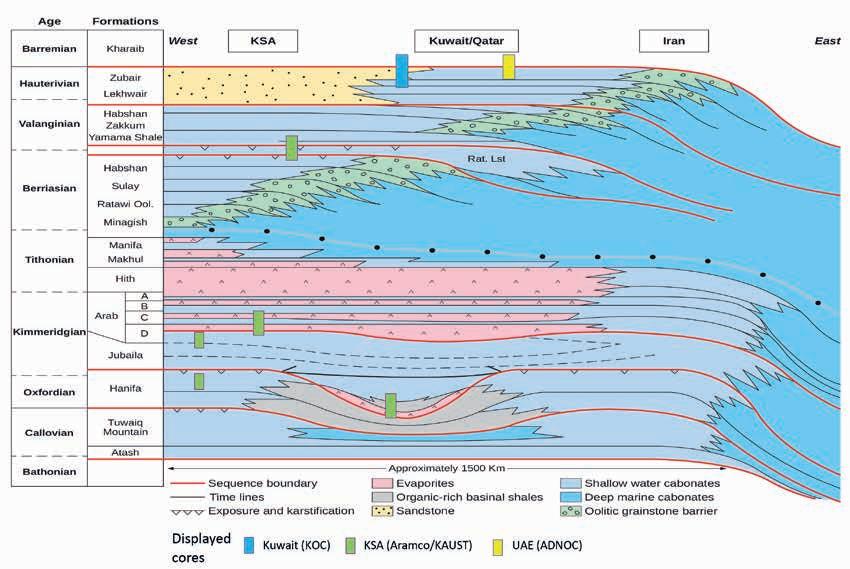
the prediction of geological models from basin to reservoir scale.
Great opportunity to share advancements in borehole geology coming November
Following four successful meetings since 2015, borehole geologists and professionals of other subsurface disciplines have the opportunity to gather in Dhahran in November 2023 for the 5th edition of the EAGE Borehole Geology Workshop.
The event reflects how borehole geology has advanced rapidly in the last few decades with the detailed knowledge from vertical and horizontal wells now having relevance not just for hydrocarbons but
applications such as geothermal, CCUS, and energy storage.
The workshop will cover topics such as borehole geophysics, hydraulic fracturing, well and borehole hydraulics, borehole imaging technology and fracking for unconventional resources. It will emphasise best practices and identify frontiers of geoscience technology to improve transforming 1D borehole data to 3D earth digital models. The intention
EAGE Online Education Calendar
is to provide a forum for the geoscience community to consider most aspects of borehole geology, given that it is a fundamental discipline to several global industries serving the mining, energy, and environmental sectors. In addition to the talks the workshop will also include a field trip involving five stops at well-exposed Eocene carbonates.
The Call for Abstracts is open until 31 May 2023.

FIRST BREAK I VOLUME 41 I APRIL 2023 7 EAGE NEWS
FOR THE FULL CALENDAR, MORE INFORMATION AND REGISTRATION PLEASE VISIT WWW.EAGE.ORG AND WWW.LEARNINGGEOSCIENCE.ORG. * EXTENSIVE SELF PACED MATERIALS AND INTERACTIVE SESSIONS WITH THE INSTRUCTORS: CHECK SCHEDULE OF EACH COURSE FOR DATES AND TIMES OF LIVE SESSIONS 3-6 APR LAND SEISMIC SURVEY DESIGN BY PAUL RAS IOSC 4 HRS/DAY 10 MODULES 11 APR11 MAY DATA SCIENCE FOR DATA GEOSCIENCE BY JEF CAERS EXTENSIVE ONLINE COURSE 14 HRS. (INCL. 4 WEBINARS OF 1-2 HRS EACH) 17-18 APR BASICS OF CARBON CAPTURE STORAGE BY MIKE STEPHENSON IOSC/EET 4 HRS/DAY, 7 MODULES 26-27 APR NEW TOOLS AND APPROACHES IN RESERVOIR QUALITY PREDICTION BY DAVE CANTRELL IOSC 4HRS/DAY, 10 MODULES
Figure 2 Schematic stratigraphic framework from Saudi Arabia to Iran, and the position of the core presented during the workshop. This transect is based on insights of the 4th EAGE Workshop on Arabian Plate Geology (2012, Abu Dhabi) and recent publications.
EAGE highlights education and training related to energy transition

GET2023 to feature energy transition education and training
Henk Jaap Kloosterman, head of strategic accounts, L&D at RPS and technical committee member of GET2023 writes: There has been a fundamental change in the nature of work in the energy sector, related to increased digitalisation and energy transition developments in particular. As a result, conventional approaches to providing learning and building workforce capabilities simply cannot continue, and adapting energy training solutions to a new environment that is more agile, flexible, streamlined and accessible, is becoming vital for effective energy transition capability development.
There has never been a greater need for academia and energy industry specialists to come together to collectively shape the training portfolio. There is an increasing need for reskilling and upskilling for a future-proof workforce, leveraging the collective expertise of subject matter experts and specialists with academic prowess. A well-rounded understanding of theory and the outcomes of latest research, applied in-field with support from industry experts, is what any modern energy professional needs. This continued professional development helps organisations fill vital gaps in skills and helps them plan just how they would like to build their workforce and aligns with the required diversification of their business strategy.
We observe the requirement for energy transition skills that have strong adjacency with those that are already widespread and well developed in the oil and gas sector, supplemented with those that are specific to low carbon and renewables subject areas, like CCS, geothermal, hydrogen and offshore wind. We therefore need to nurture a learning environment that is more agile, responsive to disruption, more integrated with real-time activities and presented in a better learning experience, at reduced cost.
This raises some important issues that we would like to see addressed in the Edu-
cation and Training session at GET2023, e.g., What critical skills and expertise do we need for the energy transition?, What forms of training are most effective to upskill oil and gas staff for the energy transition?, and How can we accelerate the capability building for the energy transition?
We are inviting relevant contributions from industry, academia and training providers to the discussion on the Education and Training topic. Please submit your abstract for a presentation at
GET2023 before 15 August 2023. Visit www.eageget.org for more information on the topic and submission guidelines.
EAGE energy transition short courses up and running
‘Geoscience and geo-engineering specialists need to jointly educate the public and each other about the role they can play in the energy transition,’ according to Maren Kleemeyer, EAGE education officer and learning advisor geoscience at Shell. ‘This means that we all need to learn fast and educate others about our current and possible future contributions to maximise our position for the new energies. We are all learners and instructors!’
EAGE has created the Energy Transition category and label in its Short Course Catalogue, adding novel and up-to-date courses focused on energy transition applications. An example of these offerings are the courses ‘Geological CO2 storage’ with instructors
Andreas Busch, Eric Mackay, Florian Doster, Martin Landro, and Philip Ringrose; ‘Basics of Carbon Capture and Storage’ by Prof Michael H. Stephenson (Stephenson Geoscience Consulting);
‘An Introduction to Offshore Wind’ with Jeroen Godtschalk (BLIX Consultancy); and ‘Medium and Low-Grade Geother-
mal Energy: Geoscience and Geomechanics’ by Grant Wach (Dalhousie University, Canada) and Maurice Dusseault (University of Waterloo, Canada).
The Energy Transition courses continue to be the most popular in terms of attendance. This reflects the growing interest and importance of discovering and discussing the latest technologies and developments towards sustainable practices and a more sustainable energy future. It is the mission of EAGE to continuously offer and develop new courses to facilitate knowledge creation and sharing in this field of great importance.
Other initiatives include the creation of a coaching programme dedicated to the development of soft-skills and practices that will make members more competitive in accessing opportunities provided by energy transition, as well as the upcoming interactive session ‘Skills for the Energy Transition’ at the Annual conference in Vienna. Visit learninggeoscience.org for more information on all the available EAGE short courses.
8 FIRST BREAK I VOLUME 41 I APRIL 2023 EAGE NEWS
Amplifying the CCS conversation in Asia Pacific region
EAGE is holding a second workshop on carbon capture and storage (CCS) in the Asia Pacific region and event chairperson Azmir Zamri (Head Resource Exploration at PETRONAS) says ‘it is a must-attend for subsurface professionals - geoscience and engineering - who want the latest updates on the enablers seeking to make CCS projects successful, particularly in the storage domain.’
The workshop entitled ‘Unlocking Carbon Capture and Storage Potential’ being held on 22-23 August 2023 in Kuala Lumpur presents an opportunity for industry players to discuss CCS efforts in the context of SE Asia. It is the second EAGE event in the region following the first workshop on CO2 Geological Storage last year in Perth, Australia. The inaugural workshop was a success attracting over 160 participants.
CCS is expected to play a pivotal role in tackling the world’s energy trilemma. Provided the unprecedented scale of challenge to the upstream energy sector, collaboration and concerted effort between industries and other stakeholders are key to ensuring the right approach is being adopted to see these CCS efforts come to fruition.
This workshop will be a great knowledge-sharing arena where the main goals are to learn about the latest subsurface workflows for CCS evaluation through technical presentations, accelerate further consideration of the application of mainstream CCS technologies in the SE Asia region, and exchange ideas and issues around CCS technology.
This latest workshop will draw on the expertise of subsurface specialists including geologists, geophysicists, reservoir engi-

neers, project managers, and petrophysicists, as well as academia. Viewpoints from policymakers, activists, financial professionals, and strategists are expected to round out the discussion and as carbon capture efforts scale up in the SE Asia Region.
The topics to be explored via roundtables with industry leaders and practitioners from the region and beyond include Subsurface geological storage; CO2 enhanced hydrocarbon recovery; Reservoir monitoring and risk assessment; Case studies; Industry applications; Economics, incentives, and policy; Infrastructure and non-technical considerations. Abstract submissions are welcome until 31 May 2023.
Learn more about this event and abstract submission information via https://eage.eventsair.com/2nd-eage-workshop-on-unlocking-carbon-capture-and-storage-potential/
Make the most of EAGE’s professional community
When he was pursuing his Master’s degree, Ilius Mondal, now a petrophysicist at the Oil and Natural Gas Corporation (ONGC) in India, seized the chance to present a paper at the EAGE Annual. He says: ‘Participating in various sessions and activities, gaining insights and diving deep into the oil and gas industry, as well as recent energy developments, gave me valuable knowledge which helped me a lot in advancing my career.’
Mondal relates the experience of just one of our many members who are grateful for what the EAGE community has to offer in its extensive range of offerings and activities. Especially if you are a student or young professional, it is worth making sure that you are making the most of your Association membership.
For example, you can consider joining a mentoring programme: as a mentor you can transfer your valuable experience and, as a mentee, you can seek career guidance and advice. No matter which role you choose, mentoring is a great way to learn and to keep growing personally and professionally.
Richard Ayisi Mensah, a student at the University of Miskolc, Hungary, joined the EAGE Mentoring Programme 2022-2023 as a mentee. He says, ‘The programme so far has been immensely helpful. I’m starting to get a grasp of what I must do to advance my career. Direction from my mentor has been decisive and measured.’
Another way of getting more involved with professional colleagues is to join an EAGE Local Chapter, where you can keep up with industry developments and the activities of the Asociation. Or be part of one of our special interest groups, for instance, Women in Geoscience and Engineering or Young Professionals which address the concerns of particular sections of the membership. There are
also technical communities now covering a range of disciplines - Artificial Intelligence; Basin & Petroleum Systems Analysis; Decarbonization and Energy Transition; Geochemistry; Geohazards; Hydrogeophysics; Mineral Exploration Geophysics; Seismic Acquisition; Seismic Interpretation, and UAV (Uncrewed Aerial Vehicles).
As a student you can be more involved in geoscience and engineering fields by joining an EAGE Student Chapter.
Whatever stage you are in your career, the key is to keep developing your professional knowledge and expertise, and there’s no better way of doing that than engaging with the EAGE community.
Join or renew your membership: www.eage.org/membership/benefits/.
FIRST BREAK I VOLUME 41 I APRIL 2023 9 EAGE NEWS
Explore the multiple engagement opportunities EAGE has for you.
Journals call for papers on digitally enabled geoscience workflows
Petroleum Geoscience and Geoenergy are calling for papers to be submitted to a joint collection on digitally enabled geoscience workflows.
Guest editors for these articles say that data science, including automation, data analytics, machine learning and processing of extremely large datasets, is now an important part of everyday life and is
transforming the way scientists conduct research and develop new technologies, enabling specific tasks to be implemented with minimal human supervision.
These techniques are providing game-changing advances in subsurface workflows in terms of time-saving on complex tasks, improved consistency and repeatability of interpretation, and utilisation of scarce experienced geoscientists.


The special collection of papers will present the state-of-the-art in data science applications for geoscience, and particularly intends to highlight the recent advances of these technologies to solve subsurface problems across various disciplines including: data science and statistics with geological applications; AI and automation on downhole production
data; integrated studies in subsurface analytics production and operations optimization; exploration/production challenges; seismic and well log interpretation; the interface between engineering and geoscience; transfer of learning to solve geoscientific problems; and data science applications to the energy transition.
Submissions should be made via the Petroleum Geoscience Editorial Manager website or Geoenergy Editorial Manager website by the deadline of 31 October 2023.
Guest editors for this collection of papers are Daniel Austin (Earth Science Analytics), Paul Wilson (SLB, Petroleum Geoscience Editorial Board) and Runhai Feng (University of Copenhagen, Geoenergy Editorial Board).
Hydrocarbon seals workshop is back for a fourth time
The 4th EAGE/AAPG Hydrocarbon Seals Workshop to be held on 28-30 November 2023 in Dhahran offers participants the opportunity to obtain up-to-date knowledge about hydrocarbon seals in exploration and production plus exposure to regional case studies. Also included will be workflows and techniques utilised for seal detection and capacity assessment, the value of which is sometimes under-estimated.
The workshop programme will cover the stratigraphic and structural frameworks, petrophysical, geomechanics, special core analysis and advances in technologies of seal assessment.
Seals are a fundamental element of any hydrocarbon accumulation, and can control trap integrity, migration and charge volumes; the lateral and vertical distribution
of hydrocarbons in a trap; percent fill (or spill) of a reservoir; and the flow of hydrocarbons from the trap during production. As such, the long-term economic success or failure of an exploration to development project is very dependent on seal risking. Subsurface hydrocarbon seals should therefore have a high priority early on in any subsurface evaluation programme. In many areas, despite the clear importance of seals, they often remain the least studied and integrated element of the petroleum system and are subject to lasting dogmas (e.g., the thicker the seal the greater its capacity to seal). Elements that contribute to making seals effective, such as lithology, their brittle-ductile nature, the hydrocarbon column length, the pressure regime and trap type will be reviewed.
Overall, the workshop is an excellent opportunity for geoscientists, exploration managers, and other industry professionals to learn about the latest developments in hydrocarbon exploration and production in the Middle East.
The deadline to submit abstracts for the workshop technical programme is 31 May 2023.
10 FIRST BREAK I VOLUME 41 I APRIL 2023 EAGE NEWS
3D geological model with data flowing out into an artificial intelligence, produced via DALL·E 2. Courtesy of Earth Science Analytics.
Geoscience role in energy transition era subject of SE Asia conference
sition being held in Kuala Lumpur on 12-13 September 2023 aims to promote renewed understanding of the importance of geoscience and the earth sciences in the future energy space.
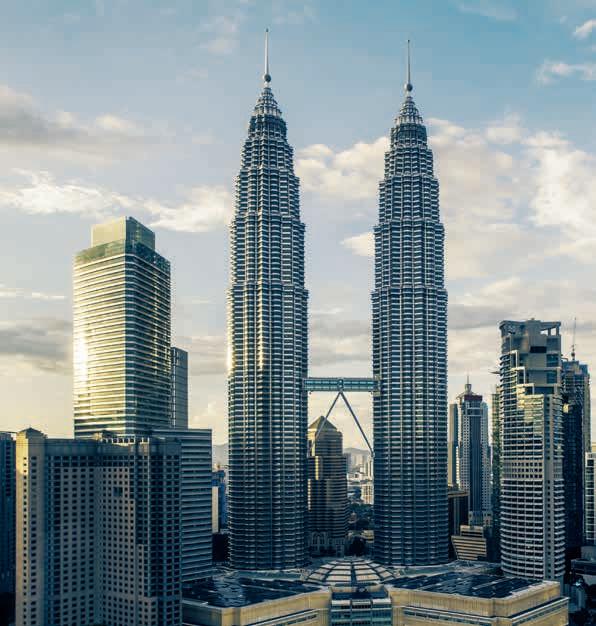
The conference programme will explore the best ideas, innovations, new methods, and best practices brought forward by geoscience and geoscience-related professionals, practitioners, researchers, academicians, and students from the oil and gas and energy-related industry.
Suhaileen Shahar (Custodian and Head of Petroleum Geoscience at PETRONAS), event chairperson, says, ‘The conference provides an ideal platform for geoscientists to upskill, reskill and repurpose by gaining actionable insights into contributions towards potential value creation in the energy transition and future energy mix.’
As the oil and gas industry presses for transition to meet our global climate
challenge, major key players are gaining momentum in diversifying their portfolio from oil and gas centric to various energy sources. Gas as the energy of choice to fuel the transition must also offer competitive and cleaner solutions. Hence, while we strive towards the development of sustainable new energy, innovative technologies to decarbonise new greenfields and enhance the optimisation of brownfields to reduce GHG emissions must continue at pace. As the oil and gas industry rethinks and drives the future global energy mix, what, where, and how could our geoscientists positively impact this momentous period?
Abstract submissions on a wide range of energy tranistion topics are welcome until 30 April 2023. Learn more about this event and abstract submission information via https://eage.eventsair.com/eage-conference-on-the-future-of-energy---role-ofgeoscience-in-the-energy-transition/
Support our EAGE Student Chapters

Here is a question for students. Have you ever taken part in one of the EAGE student webinars, E-summits, or challenges? If not maybe it’s time to participate.
And for EAGE membership in general, the question is: could you contribute to supporting activities of our students as they prepare for their career journey in geoscience and engineering? Donations are always very welcome.
Every year EAGE strives to set up an exciting programme to help our student members jump-start their integration into the professional geoscience community. Additionally, EAGE Student Chapters are encouraged to be creative and to become an essential part of local student communities involved in our energy future.
The EAGE Student Fund supports several student activities, bridging the gap between ambition and reality by offering our students and the wider geoscience community the opportunity to take advantage of the wealth of knowl-
edge and skills available in the extended EAGE network. Many of our students’ activities supported by the EAGE Student Fund are empowering an array of highly impactful initiatives developed by the EAGE Student Chapters worldwide.
Arpita Chakraborty, president of the EAGE Student Chapter of the Indian Institute of Technology Bombay, says, ‘Students are enthusiastic about EAGE and taking part in its activities, such as the Minus CO2 Challenge. As the president of the EAGE Student Chapter, I led my team in planning a two-day online global workshop and a one-day offline workshop. I am also grateful to the EAGE Student Fund for sponsoring our events ’
The Fund makes sure that student members can continue to enjoy access to high-quality events, learning opportunities, and exciting new prospects in bad and good times.
All donations to the EAGE Student Fund are welcome! You (or your company) can make a difference! You can be sure that your donation will support the present and future of geoscience and engineering: donate.eagestudentfund.org.

FIRST BREAK I VOLUME 41 I APRIL 2023 11 EAGE NEWS
The EAGE Student Chapter IIT Bombay has been active since 2021.
Looking beyond the horizon, the EAGE Conference on the Future of EnergyRole of Geoscience in the Energy Tran-
Join EAGE Conference on the Future of Energy at Kuala Lumpur, Malaysia.
LC Czech Republic launches annual student thesis competition

The EAGE Local Chapter Czech Republic is pleased to announce the eleventh edition of the Vlastislav Červený Student Prize for best Master or Bachelor thesis in theoretical and applied geophysics.
The prize is newly named after professor Vlastislav Červený, a former honorary member of EAGE, who passed away at the age of 90 in 2022 and devoted a large part of his life work to teaching young generations of geoscientists.
The competition is open to all students from universities in the Czech Republic, Hungary, Germany, Switzerland, Poland, Austria and Slovakia. In order to be eligible, thesis works must be written in English, Czech or Slovak languages and defended in the period
between 5 October 2022 and 4 October 2023. The deadline for entries is 13 October 2023.
The aim of this initiative is to encourage the application of scientific knowledge to real problems and innovativeness. This year the main sponsor of the Prize is RWE Gas Storage CZ. Seismik, G-Impuls, the Geophysical Institute of the Czech Academy of Sciences and EAGE will also contribute. Winners can look forward to a cash prize of CZK 25.000 (Master thesis) and CZK 15.000 (Bachelor thesis), in addition to an online course of their choice from EAGE’s Learning Geoscience library and a free EAGE membership for 2024.
Deadline for submitting entries is Friday, 13 October 2023. Visit www. eage.org for more information on conditions, criteria for evaluation and application forms.
4D geoelectrics insights presented at LC Czech Republic meeting
Dr Sebastian Uhlemann (Lawrence Berkeley National Laboratory) was the speaker at a lecture organised in February by LC Czech Republic on 4D geoelectrics for imaging groundwater driven processes. The meeting took place at the Faculty of Science in Prague with part of the audience connected remotely.
Dr Uhlemann presented an overview of his research, which he has conducted with numerous international groups of scientists. Although not a comprehensive overview of the use of 3D and particularly 4D measurements and interpretations of electrical resistivity tomography (ERT) due to the limited time, participants were given a basic understanding of the applicability of the method, especially in monitoring various geological and geomorphological phenomena e.g., active landslides,
permafrost melting, etc. A long Q&A followed the presentations, with many questions on the actual effect of temperature on resistivity measurements and whether the research team used surface or buried electrodes.
Some members of the Chapter have been involved in repeated measurements and even in monitoring as a part of their profession (including both basic research and commercial geophysical applications), so they found the presentation very beneficial, particularly as they had the opportunity to see some truly state-of-the-art use of ERT in monitoring applications. Dr Uhlemann shared several important messages. Firstly, changes in resistivity respond quite accurately to even slight (subtle) changes in ground water content (subsurface saturation) and therefore the method appears to be very useful for
monitoring purposes. Secondly, despite its limitations, for example in the Arctic environment, if permafrost is studied, we are able to monitor the active thawing layer very successfully. Anything below the freezing point already hits the limits of the measurement and therefore the method. Finally, time-lapse interpretations yield much more information when processed for 3D measurements or 3D models respectively (the measurements may be originally 2D) than just for 2D sections.
It was not only that some members are working on similar issues that Dr Uhlemann was able to capture the attention of the whole group. He is an outstanding scientist.
Next on LC Czech Republic’s agenda is another technical talk on DAS microseismic monitoring with Dr F. Staněk.
12 FIRST BREAK I VOLUME 41 I APRIL 2023 EAGE NEWS
2035 Vision to lead revival of Kuwait Local Chapter
This month brings encouraging news from our members in Kuwait, with the launch of a new EAGE Local Chapter. The founders invested a lot in cooperation and diversity, and have ambitious plans to make this project a success. We spoke with the Chapter president, Mohammad Dawas Manea Al-Ajmi, Exploration Group Manager at Kuwait Oil Company (KOC).
What are your plans for engaging and growing your local community?
We learned that diversity and inclusion are strengths that make EAGE unique from the other Associations. Taking this into consideration, we reached out to different groups and stakeholders - such as Kuwait University and the Kuwait Institute for Scientific Research - to secure a broad representation, including industry professionals, academics and students.
What is your vision on the energy transition?


What prompted your team to reactivate a EAGE Local Chapter in Kuwait?







Our Chapter brings together members from multiple organisations active in the country, but the project initially sparked from a team at the KOC, one of the leading players in the oil industry, interested in connecting with the EAGE global network. Having an official representation in Kuwait, where the EAGE is regarded as one of the most important professional associations in the world, will be key for the local community to thrive and a great opportunity for KOC to support their work. Our initiative
picks up from a road opened in 2017 and will lead LC Kuwait into the future.
Where would you like your Chapter to be in one year from now?

It’s important to know we have been preparing this Chapter months before submitting a petition and there is great excitement for the coming times. We set a high bar for ourselves and plan on engaging our local members through a variety of activities, including community meetings and collaborations with EAGE conferences and workshops in the region.
Energy shift and transition are the future of the O&G industry. Speaking from the point of view of KOC, the company and KPC (Kuwait Petroleum Corporation) are building their strategy as a part of multiple streams in the New-Kuwait 2035 Vision. We will continue supplying the world with oil and gas, keeping into consideration the carbon footprint and keeping CO2 emissions to the minimum.
The LC Kuwait was officially inaugurated in February. All interested members are welcome to connect via LinkedIn to learn about their upcoming activities.

FIRST BREAK I VOLUME 41 I APRIL 2023 13 EAGE NEWS 1 APR APPLICATIONS MINUS CO2 CHALLENGE 2023 OPEN ONLINE 21 APR SECOND SUBMISSION LAURIE DAKE CHALLENGE 2023 ONLINE 26 APR E-SUMMIT FACING STUDENT TEAM CHALLENGE ONLINE 5-8 JUN 84TH EAGE ANNUAL CONFERENCE & EXHIBITION (STUDENT ACTIVITIES) VIENNA, AUSTRIA EAGE Student Calendar FOR MORE INFORMATION AND REGISTRATION PLEASE CHECK THE STUDENT SECTION AT WWW.EAGE.ORG
The launch of the LC in February was also the opportunity for reboosting the collaboration with the EAGE Regional Office in the Middle East.
Strategic Programme panels to broaden scope of Annual Meeting in Vienna
The idea of the Strategic Programme is to add another dimension to our Annual Meeting. It will allow our global community of geoscientists and engineers not only to focus on the presentation of the many technology developments in the Technical Programme, but also come to grips with the serious challenges facing our traditional disciplines, the energy transition underway, and the way forward for the Association and its members.
current practices. In addition, 13 Dedicated Sessions are being organised to provide extra depth and variety.


You will notice a change in the traditional agenda at this year’s EAGE Annual Conference and Exhibition in Vienna. Alongside the usual Technical Programme we are introducing a Strategic Programme of panel sessions discussing major issues of the day, details of which will be forthcoming over the next few weeks.
Overall the Technical Programme offers 1000+ presentations spread over multiple parallel sessions. This year as ever we have a strong line-up of top quality papers covering every aspect of geoscience and engineering, providing the latest in multi-disciplinary research and development initiatives plus case studies of
Data science workshop coming to Kuala Lumpur



An upcoming workshop in Kuala Lumpur opens its doors to the geoscience community to explore the fundamentals, possibilities, career opportunities, and pitfalls of data science.
From state-of-the-art managed computing to better data discovery, you can hear from global leaders in the field, as well as independent innovators at EAGE’s Workshop on Data Science - From Fundamentals to Opportunities taking place on 17-18 October 2023.


There will be two keynote sessions, one by Dr Shivkumar Kalyanaraman (CTO, Energy & Mobility at Microsoft) and the other by Hussein Shel (director - enterprise technologist at Amazon Web Services). Dr Kalyanaraman will be discussing the digital aspects of data science in his talk on ‘The Software - and AI driven future of renewables’.
Taking a step back from the mysterious internal workings of data science applications, the workshop will discuss the foundations of data science and successfully integrating these techniques into critical exploration pipelines and focus on two levels.
As a workshop on data science, it will question what it is and how it ‘works’ including best practices and pitfalls. The second aspect would be the voyage of discovery finding out what can be done in the field of data science, the possibilities and opportunities.
Industry practitioners and researchers are welcome to contribute abstracts to the workshop on the suggested topics below until 28 May 2023: Fundamentals, pitfalls, case histories, and results; Out of the mainstream - a session dedicated to innovative applications of data science; Big oil and big data - how to derive value
The Strategic Programme builds on the previous popular Forum Sessions at the Annual Meeting to bring a great lineup of speakers over 10 panel discussions to address many broader issues impacting our industries and professions not covered in the Technical Programme, such as energy security and independence, decision quality and analysis, digitalisation, partnerships and stakeholder engagement, as well as how the workforce and skills will change in the coming years.
Make sure you head out to our website www.eageannual.org and check out these exciting new features at this year’s Annual meeting.
from exploration to development/production; Cracking the climate code through data science - an oil and gas industry perspective; Data science application beyond E&P; Healthcare, financial institutes, environmental studies, etc.; Driving the business - how data science can be used to gain insights to make business decisions and the human resources perspective; and Looking to the future - how data science is changing the world?
Learn more about this event and abstract submission information via https://eage.eventsair.com/eage-workshop-on-data-science/
14 FIRST
BREAK I VOLUME 41 I APRIL 2023 EAGE NEWS
Join EAGE workshop on Data Science in Kuala Lumpur.
Opening debate from EAGE Annual 2022.
Vienna Annual Exhibition is the place to be












With only two months away from our 84th Annual Conference & Exhibition, it’s great to see that everyone is just as excited as we are about the event, and especially the Exhibition. Heading to Vienna this June, we aim to provide you with a great earth science show as impressive as any in the past years.





tions related to topics like geothermal, CCS, wind farms, etc. In the International Prospect Centre, there is an opportunity to meet with key corporate players and national oil companies promoting exploration and investment opportunities. At the Start-up Area you can see what may be evolving as next generation technology. Also, there is a dedicated University Area at the Exhibition, where you can learn about the programme and research focus for departments in the 2023/2024 academic year.
The Exhibition in Vienna will once again be the place for you to explore state-ofthe-art products and innovative services in the industry, make new contacts and drive new business and partnerships.
Once again this year’s Exhibition continues to gather industry key players and representatives from national and international energy companies, service companies, consultancies, licensing agencies and governments, start-ups and universities. The Icebreaker Reception will kick-off the Exhibition immediately after the Opening Ceremony, a chance to maximise networking and socialising in an informal atmosphere.
Elements of the Technical Programme will also be featured in the Exhibition Hall, offering an integrated experience where following the technical presentations and networking becomes one. Free coffee points, wi-fi, working and seating areas are available across the Exhibition Hall.
Best place to start your Exhibition tour is at the EAGE Hub, where the daily programme is available with our staff in attendance to steer you to what you are looking for during the Annual. There you can also ask questions about the range of services that we provide, like membership, EarthDoc, Learning Geoscience and more. A few intriguing community and student
activities – such as speed mentoring, CV check, Young Professionals and Women in Geoscience and Engineering special sessions, Geosecrets of Austria, GeoQuiz, and education hunt – will take place on the Exhibition floor. More details are available on our website.

As ever, the multiple special interest areas in the Exhibition will bring you face-to-face with thought-leaders, innovators and disruptors in the global energy industry through a programme of talks and discussions alongside the main EAGE technical agenda. The Digital Transformation Area seeks to explore and showcase forward-thinking technology and workflows. The Energy Transition Area – a new feature introduced last year – is where you can dive into the world of renewables and learn about solu-
Visit www.eageannual.org for more information on the Exhibition, the list of exhibitors and all programmes on offer this year. Be sure to register as a delegate or Exhibition visitor sooner rather than later. You can still benefit from the discount registration rates until 15 May 2023.
For companies, universities and other relevant organisations, there is still room to participate in our Vienna Exhibition. We offer the opportunity to showcase your services and technologies, launch new products and heighten brand awareness. Our account managers are always ready to walk you through the possibilities. You can reach our account management team at corporaterelations@eage.org.
We look forward to welcoming you at the Messe Wien Exhibition and Congress Center this June.











































FIRST BREAK I VOLUME 41 I APRIL 2023 15 EAGE NEWS
Exhibiting at the EAGE Annual was a perfect occasion to showcase our latest developments to a wide range of experts from the O&G, geothermal and CCUS industries. Everybody was keen to interact and to discuss the latest challenges and solutions in the energy industry.
Peter Haff inger
Co-founder and technical director, Delft Inversion
I really enjoyed hearing the energy transition and digitalization talks. It’s a great way to communicate our positive impact in that story, and EAGE is leading that conversation. I look forward to continuing to see them as part of the EAGE programme.
Jasmine Tran
Vice president of marketing, Ovation Data
Here’s how to make the most of your trip to Vienna
We’ve put together some useful information for members intending to travel to Vienna for the EAGE Annual Conference & Exhibition.

Travelling with accompanying persons


Attending the EAGE Annual week in Vienna presents a great opportunity for you to bring your partner and family members so they can experience some of the event atmosphere and the city. They are welcome to join the many social activities during the week.


You can register your partner and family members as accompanying persons to the Vienna Annual. An accompanying person will have access to the Opening Session, Exhibition (including coffee points and afternoon drinks), social programme (Icebreaker reception and Conference Evening) and an accompanying persons’ tour with a local guide for a wonderful experience of traditional Viennese coffee culture, historic gems and locals-only hotspots.
Please note that work colleagues do not qualify for the accompanying person registration.

Flight





We are pleased to partner with Lufthansa Group to offer you flight discounts for your trip to the EAGE Annual 2023 in Vienna. The global route network of Austrian Airlines, Lufthansa, SWISS, Brussels Airlines and Eurowings offers optimal connection and combination options, so you will benefit from quick and direct flights to the event.

Accommodation
We have appointed bnetwork as the official hotel booking partner for the 84th EAGE Annual Conference & Exhibition, as it has been able to secure a wide variety of hotel options across Vienna and


Visit eageannual.org for more details and booking links. By booking early, you can plan your stay in Vienna, save money and guarantee the best experience possible. Whilst there is no obligation to book your travel through our partners, please be aware of fraudulent and non-official sites that aim to take advantage of the EAGE Annual visitors. In case of any doubt, please do not hesitate to contact us at eage@eage.org.
For bookings

guarantee room stock for groups and for individual attendees alike.
Public transport in Vienna
As an EAGE Annual delegate, you get a 10% discount off the regular price of transportation tickets from ‘Wiener Linien’ valid on all public transport services in Vienna during the conference period. You can select a ticket for one, two, three or four days, depending on the duration of your stay.
Natural Museum History Vienna
If you are a museum lover, keep the Natural History Museum Vienna in your checklist when visiting the city. It is one of the most important natural history museums worldwide and an important centre of excellence for all matters relating to natural sciences. It covers the diversity of nature, the evolution of Planet Earth and life and the related cultural development of humankind in a building designed as a total work of art. As an EAGE Annual delegate, you get a 50% discount on tickets by showing your delegate badge at the museum entrance during the conference period.
16 FIRST BREAK I VOLUME 41 I APRIL 2023 EAGE NEWS
DONATE TODAY!
The EAGE Student Fund supports student activities that help students bridge the gap between university and professional environments. This is only possible with the support from the EAGE community. If you want to support the next generation of geoscientists and engineers, go to donate.eagestudentfund.org or simply scan the QR code. Many thanks for your donation in advance!
For accompanying persons
Family members of delegates are welcome to the Annual conference.
WHY ATTEND?


1. Connect with experts in the geoscience and engineering industry









2. Share ideas with professionals around the world


3. Engage with key operating service and technology companies







4. See, touch, experience and understand cutting-edge technologies



































5. Grow a network of invaluable contacts for benchmarking, partnering and building your company and career
SPECIAL INTEREST AREAS
EXPAND YOUR KNOWLEDGE
The EAGE Annual offers various opportunities for you to gain new skills, new insights and new knowledge that are key to your academic or professional profile. With an All Access Registration, you can add Workshops, Field Trips, Short Courses or Hackathon to your event agenda.

PARTICIPATE IN OUR ENRICHING COMMUNITY PROGRAMME
Skills for the Energy Transition | Young Professionals Special Session Women in Geoscience and Engineering Special Session | Geosecrets of Austria
INTERACTIVE WORKSHOPS

WS1 Seismic Marine Sources: State of the Art



















WS3 Geoscience Driving the De-risking of Commercially Viable Geothermal Systems in Europe

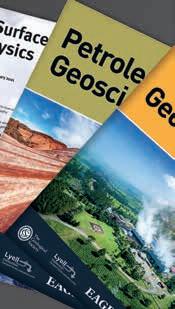
International Prospect Centre
See the full list of exhibitors on our website!
WWW.EAGEANNUAL.ORG




Are you (or your company) interested in the purchase of discounted group registrations (10+)? Contact your EAGE account manager or send a request to corporaterelations@eage.org to learn more about the details and advantages.
EXCITING HACKATHON
















Natural Language Processing (NLP) is the theme of this year’s EAGE Annual Hackathon organized by the EAGE A.I. Community. We challenge you to collaborate with your fellows and develop innovative solutions for the industry.
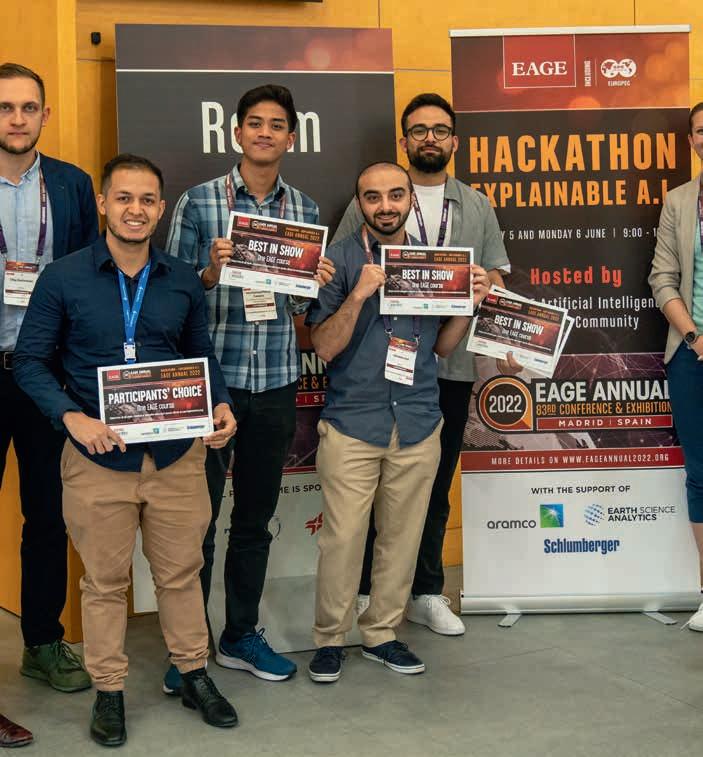
CAPTIVATING FIELD TRIPS


ENGAGING SHORT COURSES
WS17 Fault and Top Seal Essentials

WS18 Seismic Interferometry: New Advances and New Applications





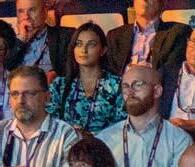







FT1

FT2























OMV Innovation & Technology Center –OMV TECH Center & Lab
Vienna: From Buildings Stones to an Urban Geothermal and Geophysical Testsite
SC1 An Introduction to Offshore Wind





SC2 Basics of Carbon Capture and Storage






SPETC Energy Transition for Oil & Gas Professionals*




WS5 The Role of Near-Surface Geophysics and Engineering in Renewable Energies and Low-Carbon Economy Transition

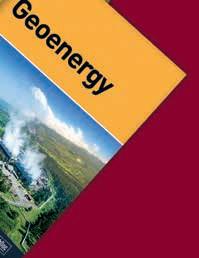
WS7 Natural Hydrogen Exploration

WS8 Last European Frontiers
WS12 FWI Imaging












WS13 Geostatistics and its Latest Developments Using Machine Learning Methods









WS14 Future Challenges in Geochemical Research for a Sustainable Environment
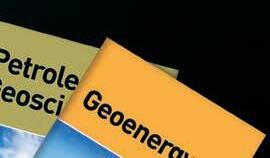


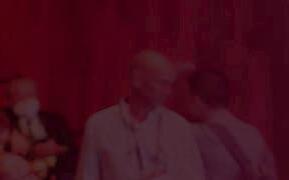
WS19 Six Steps Towards High Quality Decisions –Using the Example of Developing a Low Carbon Project
WS20 Distributed Fiber-Optic Sensing in Geotechnical Engineering and the Energy Sector


SPEWS1 Integrated Geochemistry Technology for







FT3 The Neogene of the Vienna Basin –A Visit to one of the Largest Onshore Hydrocarbon Fields in Europe
FT4 Geothermal Energy Utilization in the Styrian Basin: A Success Story of Sustainable Agriculture
OUR YOUNGER MEMBERS ARE ALSO INVITED TO BE PART OF THE STUDENT PROGRAMME
EAGE Global GeoQuiz Networking Cafe | Exhibition Tour Student Field Trip | Education Hunt (prizes included!) | EAGE Student Chapters’ meeting
Stay tuned for opportunities to publish your research in our academic journals and in our flagship magazine, First Break Find out more information about our publications and other activities at the EAGE Community Hub!


Engineering Applications SPEWS2 CCS Evaluation: From Geoscience to the Economics SPEWS3 Designing the Future of the E&P Business 1000 1100 1150 1004 2000 2200 2250 ETA 2300 250 100 ETA ETA 130 129 IPC16 3500 3400 3300 3275 3290 4700 4708 4710 4702 4707 4550 4500 4650 IPC116 211 IPC IPC10 IPC110 3000 4000 150 152 158 6000 7000 8020 8100 9000 9002 9004 DTA 230 DTA DTA 140 DTA 150 10032 10030 10028 10024 DTA 316 DTA 310 DTA 300 DTA 224 215 8000 8030 6200 6300 5310 5313 5314 5316 4314 6450 6600 6700E 6700D 6700C 5405 5401 5403 5505 5600 5650 UNI 6800 6950 8200 8300 5525 5530 5540 5520 5510 6700B 6475 5000 5100 3250 EAGE Community Hub IPC Area Transition Energy Transition Theatre Digital Transformation Area Digital Transformation Theatre 1 3 Entrance Entrance Galerie Rooms University Area * NOT included in the All Access Package. Digital Transformation Area Energy Transition Area SCAN THE QR CODE FOR THE FULL PROGRAMME Start-up Area Complete your EAGE Annual Experience!
Welcome to



























































THE 84 TH EAGE ANNUAL CONFERENCE & EXHIBITION !
VIENNA, MESSE WIEN | 5-8 JUNE 2023




















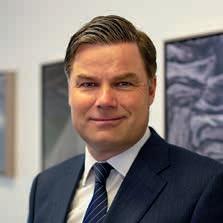

















ABOUT THE EVENT

























In June 2023 the global geoscience and engineering community will come together in Vienna to discuss the greatest resource challenges facing our industries as we navigate the need to reduce environmental impacts while meeting future needs for affordable energy and resources. EAGE, together with our local host OMV, invites you to join us for a week of transformational learning and networking opportunities under the theme "Securing a Sustainable Future Together".

Delegates 6000+
Ready to join us in Vienna this June?


STRATEGIC
PROGRAMME


HOST SPONSOR








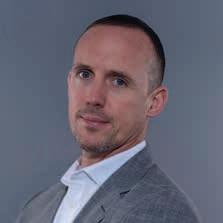
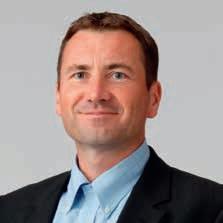
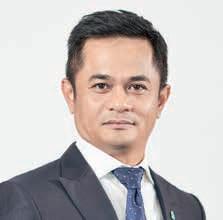

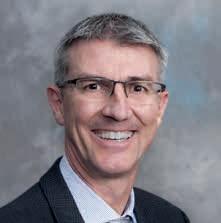




Presentations 1300+
OUR ANNUAL IS SURE TO HAVE YOUR DESIRE TO LEARN SATISFIED !

• Technical Programme: Hear ground-breaking and innovative findings presented by your peers







• Strategic Programme: Join panel discussions on critical challenges and opportunities impacting our operation





• Exhibition: Meet decision-makers and people behind the products, services, technologies











• Workshops: Share experience and discuss some of the most relevant topics from a technical point of view
200+ Exhibitors
• Short Courses: Stay up to date with key knowledge relevant to developments in the energy transition field

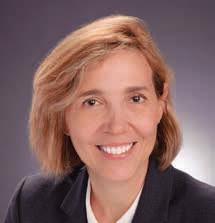













• Field Trips: Explore regional geological outcrops and industrial facilities
• Hackathon: Work on real-world challenges and use-cases in geoscience













• Community & Student Programme: Participate in career development activities and connect with our communities
• Social Programme: Make new contacts during the ice breaker reception and conference evening










NEW REGISTRATION SETUP

All Access Package
Maximise your time at the event and experience the full content available!



THANK YOU TO OUR SPONSORS!
REMEMBER: YOU WILL BENEFIT FROM THE DISCOUNTED FEE IF YOU SIGN UP BEFORE 15 MAY 2023
MAIN SPONSORS REGISTER AT WWW.EAGEANNUAL.ORG
We bring together industry leaders to discuss the key issues of energy security and independence, a sustainable energy transition and how we all need to adapt our traditional ways of working and cooperation to address this uncertain future.


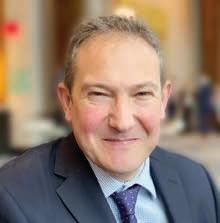

SVP
Kristian
Hans
Kathrin
SVP
Kevin
SVP
Mohd
Abdul
VP
John
VP-Head
Markus
SVP
Michael
VP
S&P
Greg
VP
Ann
President, GeothermEX Elizabeth
VP Exploration, Chevron
SVP
Production
Sophie
Christina
Angelika Zartl-Klik
Low Carbon Business, OMV
Johansen CEO, TGS
Kuehner Director International Exploration, Chevron
Dufour
Digitalization & Technology, Wintershall Dea
McLachlan
Exploration, TotalEnergies
Redhani bin
Rahman
Exploration, PETRONAS
Ardill
of Global Exploration, ExxonMobil Upstream
Berghofer
Technology & Innovation, OMV E&P
Wynne
International Upstream,
Global Commodity Insights
Rock
Exploration, OMV E&P
Robertson-Tait
Schwarze
Erling Vågnes
Subsurface Exploration
International, Equinor
Zurquiyah CEO, CGG Hugo Dijkgraaf CTO, Wintershall Dea
Verchere CEO, OMV Petrom
HOST SPONSOR MAIN SPONSORS
A story of overcoming adversity
PGS chief geoscientist Andrew Long survived a life-changing accident to become a leading geoscientist of his generation, respected lecturer and industry commentator. A prolific author and recipient of numerous awards, he has been involved in most of the company’s technology advances over the last 20 years.
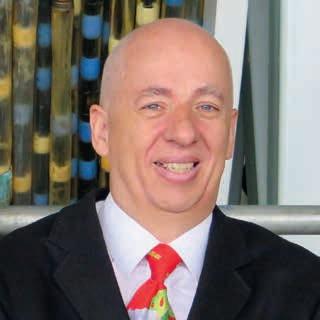
Upbringing in Australia
I grew up in Bendigo, Victoria, which was a gold mining centre in the mid1800s. We didn’t have much money and lived a very basic life. Higher education was the obvious path for me as I loved science and math. Apparently from three onwards I wanted to become a surgeon as that seemed like the highest profession in life anyone could possibly achieve.
Geoscience over medicine

It wasn’t planned. I started in medicine at Melbourne University, switched to the advanced physics and mathematics stream for two years, and then I switched again to geophysics as my friends were doing it. It seemed like the only way to escape from a life splitting atoms in a lab somewhere. When I finished, I made the impulsive decision to take a 40-hour bus trip across Australia to start a postgraduate degree in seismic. I made great friends in Perth and lived a rollicking life playing rugby and studying. Unfortunately, life was interrupted a year later when I broke my neck.
Accident
It lives with me every day, but I generally don’t talk about it. I was standing over a shothole when 4 kg of gelignite went off, taking the full force in my chest. My cervical vertebrae were dislocated from my thoracic vertebrae. It was seven and a half months in a spinal unit before I got out, over 20 kg lighter, and wheelchair-bound.
Personal philosophy
On my first night in hospital, blinded with shrapnel, a nurse read the following passage to me from The Greatest Salesman in the World by Og Mandino: ‘I will persist until I succeed. I was not delivered unto this world in defeat, nor does failure course in my veins. I am not a sheep, waiting to be prodded by my shepherd. I am a lion and I refuse to talk, to walk, to sleep with the sheep. I will hear not those who weep and complain, for their disease is contagious. Let them join the sheep. The slaughterhouse of failure is not my destiny.’ While I never had any time for motivational books, I never forgot her act of kindness or the power of those words.
Back to work
Getting back into employment was the best rehabilitation, aided by my now long-suffering wife Ros who I had met in hospital. I wanted to prove everyone who doubted me wrong. I still hate the sheep … I just try to get on with things, exploit my dark sense of humor, and not make a big deal out of my situation.
Stanford connection
After a few years in seismic processing, I started a PhD at UWA with my supervisor Mike Dentith. I also had a cool job developing a commercial marine gravity product based upon satellite altimetry with World Geoscience. I met the Stanford prof, Jon Claerbout, at a conference in Perth where I was presenting my satellite altimetry stuff. He graciously funded a trip
to visit Stanford later that year, and I met another Stanford prof, Simon Klemperer, in Hungary en route to California. Two years later they teamed up with Ginger Barth, a research associate, to offer me a post-doctoral position. Stanford is the most extraordinary melting pot of truly inspirational and brilliant people from all backgrounds and demographics. I had a fabulous time and it has shaped my attitudes and methods ever since.
Career at PGS


I joined PGS at a time of amazing growth led by huge investments in technology and innovation. For the first few years my mentors, Sverre Strandenes and Magne Reiersgard, fostered a winning culture that felt like a messy but exciting family. I’ve always tried to span as many geoscience disciplines as possible, I love teaching (I can thank my high school teacher Mum for that) and being a ‘catalyst’ to make things happen. I’ve been fortunate to travel to many places with PGS (my favourite being Japan).
Favourite movie
The Fifth Element.
Life in Perth
Aside from a second short period back in the US, I’ve endured the Oslo timezone for over 20 years in Perth. It is beautiful and safe, and I felt I always owed it to my wife and now 23-year-old daughter Claire to live here. And PGS has generally supported my remote location.
FIRST BREAK I VOLUME 41 I APRIL 2023 17 PERSONAL RECORD INTERVIEW
Personal Record Interview
Andrew Long
























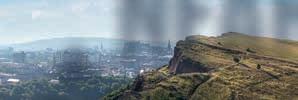


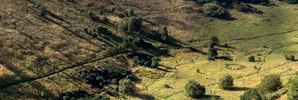




























































































































































































































































































































































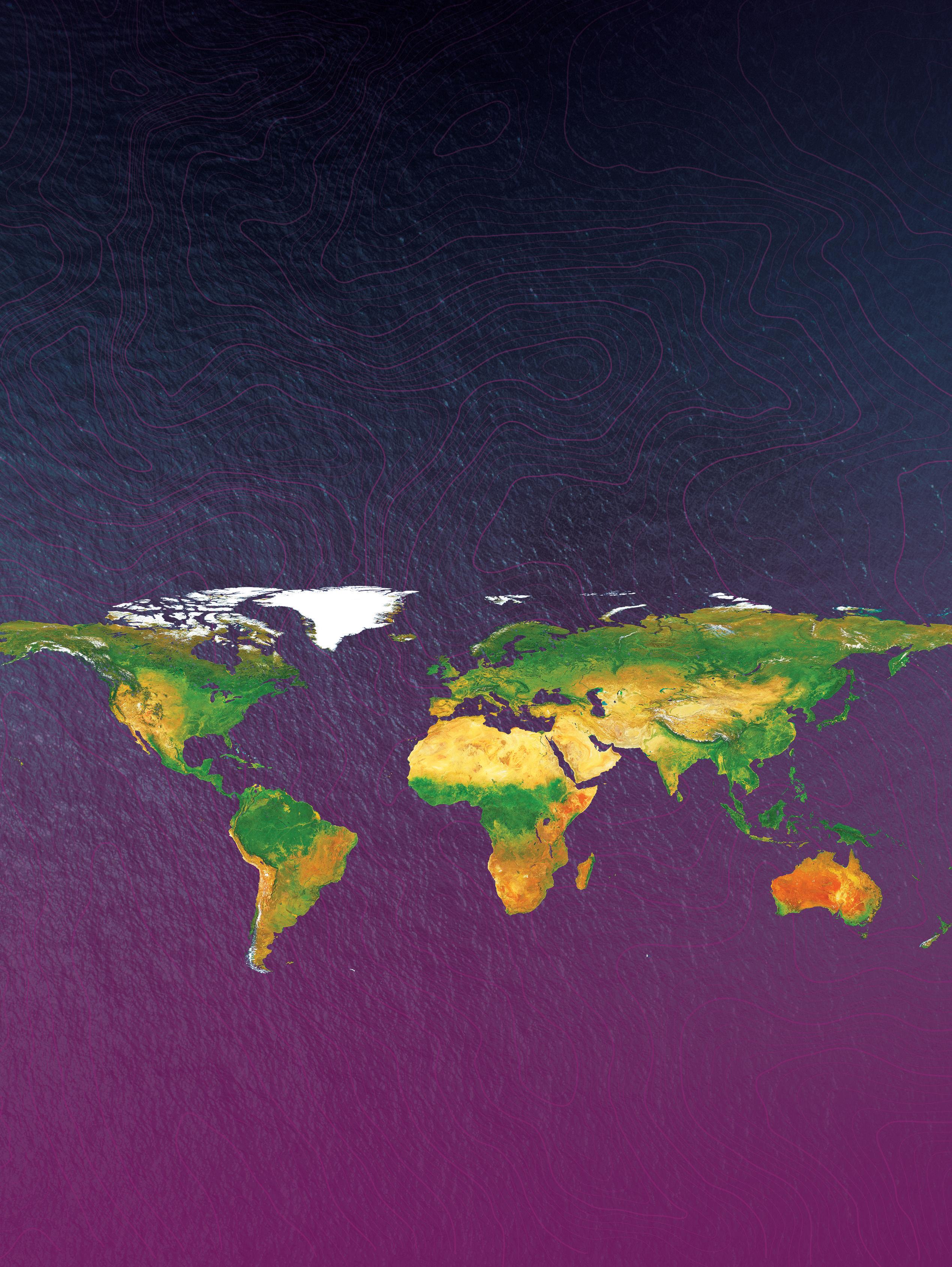
3-7 SEPTEMBER 2023 | EDINBURGH, UK SUBMIT YOUR ABSTRACTS BEFORE 25 APRIL 2023! 18 FIRST BREAK I VOLUME 41 APRIL 2023 Make sure you’re in the know EAGE MONTHLY UPDATE 14 April 2023 Call for Abstracts First EAGE Conference on Deepwater Equatorial Margin 25 April 2023 Call for Abstracts Near Surface Geoscience Conference & Exhibition 2023 7 May 2023 Call for Abstracts 2nd EAGE Workshop on Fluid Flow in Faults and Fracture IMPORTANT DEADLINES 6-9 NOVEMBER 2023 • PARIS, FRANCE SUBMIT YOUR ABSTRACTS! CHECK OUT THIS MONTH’S ARTICLES REGISTER NOW! 10-15 SEPTEMBER 2023 • MONTPELLIER • FRANCE CHECK OUT THE AGENDA ! EAGEANNUAL.ORG WWW.EAGENSG.ORG
World Class Processing & Imaging














Powered by Reveal





Marine seismic processing and imaging services for all your ocean bottom and towed streamer challenges.









UNITED KINGDOM
STATES EGYPT INDIA
UNITED
MALAYSIA AUSTRALIA NIGERIA ANGOLA BRASIL
CROSSTALK






 BY ANDREW M c BARNET
BY ANDREW M c BARNET
Consequences of war a year on …
Who does not feel guilty about following the relentless horror of Ukraine’s fight for survival from the comfort of their own living rooms, at least dimly aware that in reality a proxy war is being fought on behalf of NATO and its allies to curb Russian aggrandisement under its aggrieved and autocratic leader. Human nature is also such that, from the outset in February last year, we have selfishly speculated about disruption to the world’s political and economic order and of course how this might be reflected in our everyday life.
Understandably analysts have focused primarily on global energy supply and demand. The expectation was that strategic reductions in Russian gas supplies would cause havoc and hardship in Western Europe. The Kremlin hoped support for Ukraine would weaken. In fact, the blackmail has failed, as well argued by Szymon Kardaś, senior policy fellow, European Council on Foreign Relations.




In 2021, EU countries imported 155 billion cubic metres (bcm) of Russian gas, accounting for about 45% of total gas import, 108.1 million tonnes (mt) of oil, 91 mt of petroleum production plus 51.4 mt of coal. In 2022 Russian changes in gas supply rules including the gas for rouble decree and suspension of gas transport via the Nord Stream 1 pipeline reduced exports to the EU to 80 bcm. The shortfall was made up by increased gas imports from Azerbaijan and Norway plus more LNG (ironically an increase of 60% from Russia). Remarkably, in January, Foreign Minister Christian Lindner was able to state that Germany no longer depended on Russian imports for its energy supply. Diversifying its energy infrastructure included reopening some coal-fired power plants, delaying plans to shut down its three remaining nuclear power plants, stepping up LNG, and increasing capacity to store natural gas imported.
Kardaś acknowledges that in 2022 there was an estimated 10-12% decline in EU natural gas consumption aided by mild weather, some domestic ‘green’ behaviour and reduced industrial
production. Not all these factors will persist going forward, but Europe will focus on decoupling its energy dependence on Russia.
As for Russia, responsible for around 10% of world oil supplies, its oil output initially defied predictions of a decline, rising in 2022 by 2% to 535 mt (10.7 million b/d) largely due to sales to Asia, especially, India and China.
However, the price cap of $60 a barrel on seaborne cargoes of Russian oil imposed in December by the Group of Seven countries, EU and Australia appears to be having an impact. In February Russia announced a cut in output of 500,000 b/d. However, this has not persuaded OPEC+ countries to back away from the cut in quotas agreed last November apparently in the belief that Russia will continue to maintain supplies to countries where no sanctions apply.
During the period of global energy supply adjustment/uncertainty the price of oil soared, but this phenomenon has been only one factor in the global economic malaise. Government stimulus measures to counter economic dislocation of the Covid-19 pandemic, disruption to supply chains, and economic slowdown in China plus an unanticipated rise in product demand in 2021 all contributed to inflationary pressures before the oil and gas supply crisis provoked by war in Ukraine.
In other words, the high cost of energy was not the sole source of woes being experienced worldwide. In Europe, the UK with an economy already self-harmed by Brexit, has been notably affected by the combination of negative forces. That said, the unprecedented profits that have accrued to the major players in the oil business during this tumultuous period have touched a nerve with governments, not to mention motorists paying through the nose at the petrol pumps. There has been much speculation that the annual results from Big Oil, the most conspicuous consequence of the war, may prove some kind of tipping point in government and public thinking about energy and fossil fuel dependence.

20 FIRST BREAK I VOLUME 41 I APRIL 2023
BUSINESS • PEOPLE • TECHNOLOGY
‘Europe focused on decoupling energy dependence on Russia.’
The figures are certainly eye-watering. The five largest companies raked in just under $200 billion in profits. ExxonMobil topped the billing posting a $56 billion net profit for 2022, setting not only a company record but a historic high for the IOCs. Shell hit $39.9 bn in 2022, double the previous year’s total and the highest in its 115-year history. Chevron notched up a record $36.5 billion profit for 2022, more than double the previous year. Close behind TotalEnergies earned a record net profit of $36.2 bn in 2022. Bottom of the class, so to speak, was BP with a net profit of $27.7 bn for 2022 compared with $12.8 billion for 2021.
NOC profits tell the same story, e.g., Petrobras ($36 billion up 77%), Equinor $22.7 billion (double earnings booked in 2021), and even the Chinese companies did well despite weak domestic demand. China’s top oil and natural gas PetroChina Co exploration company registered preliminary net income for 2022 68% higher than the previous year. CNOOC’s annual results are also expected to show major gains.
Towering over every other company is the performance of Saudi Aramco. Last month it reported a record annual net profit of $161.1 billion for 2022, an increase of 46% from the previous year attributed to higher energy prices, increased volumes sold and improved margins for refined products.
To date these extraordinary results do not appear to have had the impact you might expect – for example, more concerted efforts to accelerate the pace of transition. Plenty of governments have used the opportunity to extract some extra revenue from windfall profit taxes. This money grab has extended beyond the oil industry to power generators, and in the EU even to the renewables sector (wind and solar). But there is not much evidence of the unbudgeted money being dedicated to new energy transition initiatives; alleviating the astronomic cost of domestic electricity bills has been the priority of governments.
Nor is anyone seemingly taking very seriously the call for oil industry accountability from lobbying organisations such as the Union of Concerned Scientists. It argues a provable causal link between fossil fuel extraction, climate change and the many extreme weather events around the world to suggest that oil companies should be coming up with some form of compensation. Climate change reparations from rich nations for ‘loss and damage’ to poorer vulnerable countries were of course on the agenda at the most recent COP 27 meeting in Sharm el-Sheikh, Egypt but did not involve unrepresented oil companies.
In fact the sudden energy crisis has noticeably changed the conversation about how far oil companies should diversify their business model to accommodate energy transition projects of uncertain profitability. The industry is sticking to a modified narrative of the world needing a consistent flow of oil and gas, plus the familiar story that the business is cyclical and companies have the right to reward their investors, regardless of the world events that generated their good fortune.
Hence the majors unabashed have announced big payouts to stakeholders and buy-backs. For example, Chevron plans to triple its spending on share repurchases to $75 billion over five years. To be fair, all companies say they are working on more sustainable production and, maybe with the exception of ExxonMobil, making significant investment in alternative energy solutions.
Ironically, what infuriated US President Biden was that the ‘outrageous’ shareholder payouts were given precedence over boosting output and lowering gasoline prices. Oil companies in general continue to preach caution over E&P spending ‘capital discipline’ but of course complain about any licence decision which goes against them, not to mention the effect of windfall taxes on their options.
There is no perfect solution here. After all, it was the Biden Administration which last August managed to get passed into law the Inflation Reduction Act including a very significant spending and tax incentive package related to climate change mitigation and renewables. It arguably puts the US at the forefront of the world’s energy transition movers and shakers, on a par with the EU’s initiatives.
Meanwhile the shock to the global energy system has temporarily taken the pressure off Big Oil. A year or two ago CEOs were having trouble fending off environmental activist shareholders. As reported in the Washington Post, shareholder resolutions demanding the companies align their business activities with the commitments in the Paris accord on climate change won less support in 2022 than they did in 2021. A resolution at Shell’s annual meeting from the Dutch activist group, Follow This, won just 20% of the vote, compared with 30% a year earlier. A similar proposal won a third of shareholder support at Chevron, having won 61% in 2021.
Some wags rather unkindly say the BP brand is no longer ‘Beyond Petroleum’, but instead ‘Back to Petroleum’, a reference to recent dilution of the company’s previously stated net zero targets and production cuts. CEO Bernard Looney has conceded that they were too ambitious to meet the so-called energy trilemma confronting the world, namely delivering energy that is secure and affordable as well as lower carbon.
The sentiment was also echoed by Shell’s new CEO Wael Sawan. He has publicly stated that cutting oil and gas production at this stage would be unhealthy. At the recent CERA Week in Houston ExxonMobil CEO Darren Woods went “Full Monty” on the company’s commitment to oil and gas: ‘We saw in 2018, particularly with a lot of the climate emphasis, that people were pulling back. We leaned in. We were heavily criticized for doing that at the time, but we recognised that, at some point, supply was going to be needed.’
In energy terms, therefore, the Ukraine conflict has been a wake-up call about the status of oil and gas in the global energy mix, hopefully without veering too far off the energy transition road.
FIRST BREAK I VOLUME 41 I APRIL 2023 21 CROSSTALK
‘The pressure is temporarily off Big Oil.’
Views expressed in Crosstalk are solely those of the author, who can be contacted at andrew@andrewmcbarnet.com.

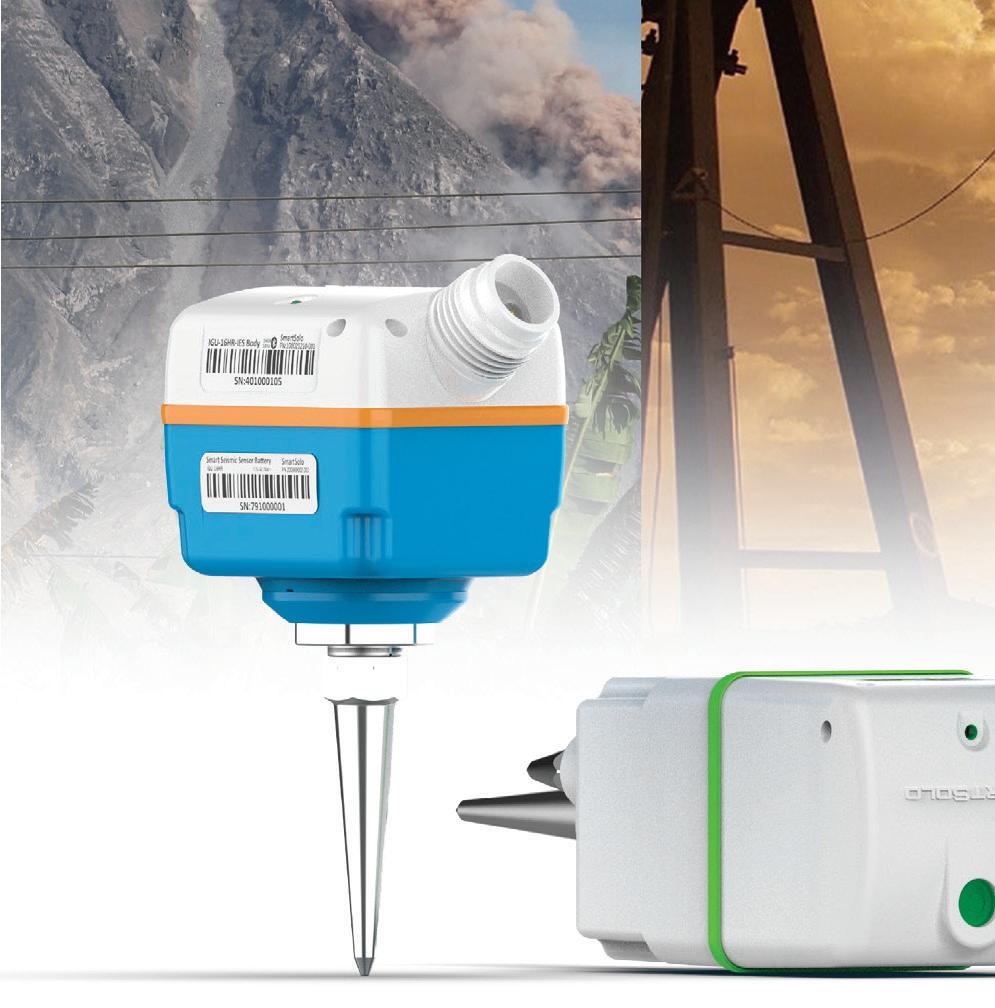

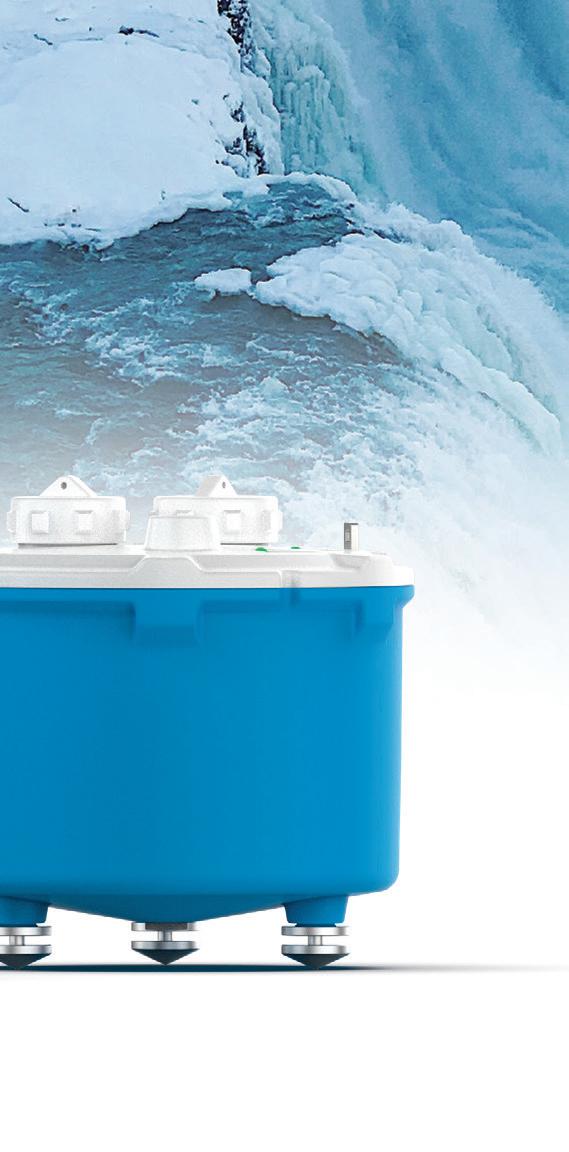
Exploration and production outlook improves for UK and Norway in 2023 says Westwood Energy
The outlook for E&A drilling offshore Norway and UK in 2023 has got off to a positive start with reports of discoveries at Orlov and Pensacola in the North Sea.

The year 2022 was disappointing with just five exploration wells and three appraisal wells completed in UK waters and just one commercial recovery. However, already in 2022, including wells that are currently active, Westwood cites 13 prospects targeting c. 1.5 billion boe of pre-drill resources that could potentially operate in 2023 in the UK as well as five appraisal wells.
‘Despite an increased focus on infrastructure-led exploration (ILX) in recent years and a general lack of success in high impact (HI) and frontier wells, com-
panies continue to pursue HI opportunities in the UKCS, where positive results can be both company makers and provide the catalyst for further activity and investment in a play,’ said Emma Cruickshank, Head of NW Europe at Westwood. In addition to the recent Pensacola high impact well, other exploration wells to watch in 2023 include North Sea Natural Resources’ Devil’s Hole Horst and Parkmead’s Skerryvore prospects in the CNS, and TotalEnergies’ Benriach prospect in the WoS.
In Norway high levels of exploration and appraisal drilling are expected to be maintained in 2023. However, there is a clear focus on near-field exploration.
Norway is also expecting a better year for exploration after a relatively disappointing 2022 when although there were nine commercial discoveries from the 28 wells completed, only 214 mmboe was discovered and all discoveries were less than 40 mmboe.
Offshore Norway there are 38 prospects, targeting some 2 billion boe of unrisked resources currently on Westwood’s list of drilling candidates in 2023, as well as seven appraisal wells targeting volumes of c. 1 billion boe. All but four of the exploration wells are targeting ILX prospects that could add volumes to the surrounding hubs and there are only five high impact-wells.

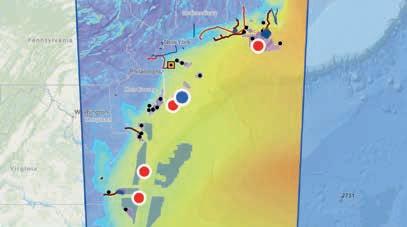
A slight uplift in production on the UK Contintental Shelf is expected in 2023, with Westwood estimating production at 1.5 million boepd, aided by the start-up of the Neptune-operated Seagull field, an HPHT tie-back to ETAP, and Shell’s Penguins Redevelopment. Infill campaigns, including Clair Ridge, Cygnus and Golden Eagle, are also expected to provide uplifts to hub production.
Six field developments are expected to be sanctioned by authorities in 2023, the largest being the Equinor-operated Rosebank development which bucks the low-risk investment trend.
In Norway, Westwood is also forecasting a slight increase in production in 2023 to 4.25 million boepd. Johan Sverdrup Phase 2 will drive the bulk of the production increase in 2023 having been brought onstream in mid-December. There is a healthy level of reserves replacement over the coming years with a good pipeline of field start-ups through to the latter stages of the decade. The result is forecast to sustain production levels at c. 4 million boepd to 2026. The year 2023 is expected to be a record-breaking one for field development sanctions, with PDOs having been submitted for the development of 22 fields awaiting approval. Combined, these fields have associated reserves of 1.23 billion boe.

FIRST BREAK I VOLUME 41 I APRIL 2023 23 Fugro
vessels 26 TGS
power modelling 31 Petrobras
wind farm deal 32 HIGHLIGHTS INDUSTRY NEWS
buys two geotechnical
expands US wind
signs
Drilling platform, offshore Norway.
There was a drop in both the number and the aggregate value of M&A deals announced in the UK in 2022 compared to 2021 and the outlook for M&A in 2023 is expected to remain tight. Volatile commodity prices, along with political and fiscal instability thwarted some deal making, said Westwood. The largest
deal of the year was Ithaca Energy’s acquisition of Siccar Point Energy for an initial consideration of $1.1 billion. Westwood expects further consolidation of portfolios in 2023, but the pool of prospective buyers is decreasing as companies take a more cautious approach to UKCS investment.
Aker BP’s acquisition of Lundin Energy completed in June 2022, created the largest independent company on the NCS. Sval Energi acquired Equinor’s Ekofisk interests and 19% in Martin Linge for $1 billion, and of Suncor Norge for $320 million. Not much M&A activity is expected in Norway this year.
Joint venture launches FTG exploration service in Saudi Arabia
Bell Geospace and Saudi Geophysical have launched an agency to serve geophysical exploration programmes in Saudi Arabia.
The agency will facilitate airborne full tensor gravity gradiometry (FTG) exploration programmes in Saudi Arabia from project conception through to data delivery and application.
‘It is well reported that Saudi Arabia’s next steps of economic growth will come from sustained oil activity and an expansion of non-oil sectors such as mining and minerals,’ said Sean Siegfried, CEO at Saudi Geophysical. ‘By adding the key technology of Bell Geospace airborne exploration to our existing suite of geophysical techniques, we are well
placed to serve our local market.’
Bell Geospace delivers airborne full tensor gravity gradiometry and magnetic data for geological and structural mapping. The data locate density contrasts relating to subsurface geological architecture for energy, mineralisation zones, geothermal resources, or potential carbon capture sites.
PGS introduces interactive rock physics tool to Ghana
for further studies. Any perturbation of lithology, porosity, and fluid generated by users is constrained within the limits of this regional model.
PGS has teamed up with the Ghanaian Petroleum Commission to bring the latest technology in interactive rock physics to Ghana’s offshore.
The regional atlas provides a screening tool for explorationists, featuring wellknown discoveries in the area, and provides key insights for porting success to new areas.
The atlas features 12 wells in the most important Early and Late Cretaceous plays
offshore Ghana. Petrophysical evaluation has been performed on each well, ensuring optimal description of the mineralogy, porosity, and fluid at both well and regional scales.
PGS has used rock physics models to describe the intrinsic relationships between rock properties and elastic logs. This has also been used to condition the elastic data, where required, and to build a regional rock physics model that serves as a basis
The built-in synthetic seismogram tool allows users to generate synthetic seismic data in real-time from in-situ and any perturbational scenario they can imagine. The built-in data comparison also allows for effortless comparison between synthetic and available seismic data, providing the opportunity to correlate the seismic response of potential prospects with known wells in the area.
Meanwhile, PGS has won a contract to carry out a 3D survey offshore Namibia. The vessel Ramform Titan is mobilising for the survey and acquisition is expected to complete in late May 2023. ‘This contract award follows nicely after the previous project and secures visibility for the vessel into the 2023 summer season,’ said PGS president and CEO, Rune Olav Pedersen.

24 FIRST BREAK I VOLUME 41 I APRIL 2023 INDUSTRY NEWS
PGS’ Ramform Titan is mobilising for a survey offshore Namibia.
TGS and SLB launch
OBN survey in US Gulf of Mexico

TGS and SLB have launched the Engagement III ultra-long offset ocean-bottom node (OBN) acquisition in Green Canyon, US Gulf of Mexico.
Imaging uplifts will be delivered through full-waveform inversion (FWI) velocity model-building utilising the ultra-long offsets — imaging to be carried out by SLB with final results expected in mid-2024. Engagement III is the fifth multi-client ultra-long offset OBN acquisition in the Gulf of Mexico and extends the data coverage south from prior phases.

Kristian Johansen, CEO at TGS, said: ‘TGS and SLB continue to lead the advancements of ultra-long offset OBN acquisition in the US Gulf of Mexico, providing the industry with access to marked improvements in image quality in this geologically complex basin.’
The acquisition is expected to be complete in April 2023.


Meanwhile, TGS has launched the Pontiac 3D onshore seismic programme in the Midland Basin, encompassing ~432 km2 in Ector, Midland, Crane, and Upton counties, Texas.
Pontiac 3D sits on the western edge of the Midland Basin and encompasses historical production from Sprayberry and Wolfcamp intervals along with significant accumulations in deep-seated structures in the Devonian and Ellenburger formations. The survey is designed to assist in the evaluation and horizontal development of multiple zones including the emerging Barnett Shale, Mississippi Lime, and Devonian horizons which are highly prospective with analogous play concepts having been proven just north of Pontiac in Andrews County.
Data acquisition is expected to begin in Q3 2023 with final data available to clients in early Q2 2024. TGS’ geologic products database complements Pontiac 3D, including interpretive products and data from more than ~250,000 wells in the Midland Basin.,
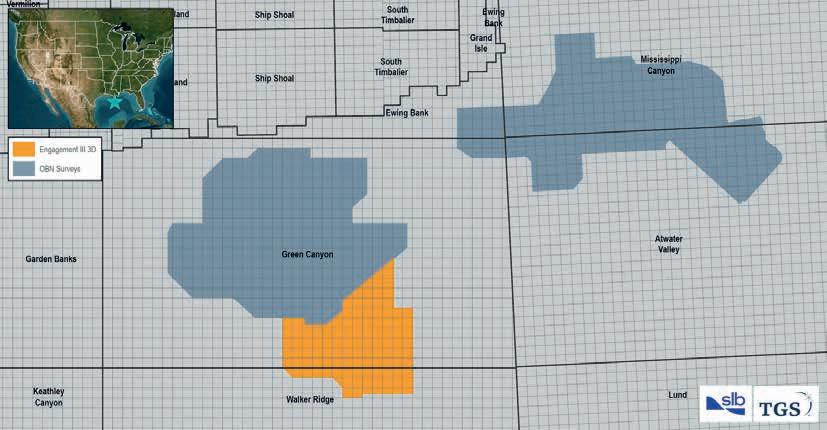
Kristian Johansen, said: ‘The data will be processed by TGS utilising its modern land imaging technology, including TGS’ dynamic matching full wave inversion, to provide clients with greater reservoir understanding.’


Passive seismic acquisition... transformed
FIRST BREAK I VOLUME 41 I APRIL 2023 25 INDUSTRY NEWS
Reduceseismiccostsby upto50%
Minimisecrewsizeand HSErisk
Acquirehigh-resolution seismic,fasterthanever before
With the world's smallest, lightest and most affordable seismic sensor
Stryde Limited Apr23.indd 1 10/03/2023 15:28
Watch our nodes acquire passive seismic in a way that has never been done before
Map of TGS’ and SLB’s OBN survey in Green Canyon.
Fugro buys two geotechnical vessels
Fugro has agreed to acquire two platform supply vessels, Topaz Endurance and Topaz Energy, both built in 2015, which will be repurposed to geotechnical vessels.

‘The offshore renewable energy market continues to grow rapidly, leading to high demand for Fugro’s services and strong backlog growth,’ said Fugro in a statement.
‘Charter rates have been increasing and the vessel market is expected to remain tight. With the purchase of these strategic
assets Fugro will maintain a balanced vessel portfolio while keeping flexibility towards the future,’ the company added.
The vessels are significantly more energy efficient than Fugro’s current fleet and offer options for hybrid conversions and/or alternative marine fuels in the future. Fugro continues to invest in remote and digital solutions and will further grow its fleet of uncrewed surface vessels as part of its net zero 2035 roadmap, the company added.
New Zealand Oil and Gas farms into permits offshore Australia to pay for 3D seismic survey
New Zealand Oil and Gas has acquired a 25% stake in Triangle Energy’s Permits L7 and EP 437 in the Perth Basin offshore western Australia.

The $10 million farm-in will pay for the $1.9 million Bookara 3D seismic data as two wells in L7 and a well in EP 437. Talon acquired a 25% interest in the
permits in December 2022. ‘The joint venture will comprise three technically competent and well-funded partners who are keen to develop the exciting north Perth Basin acreage,’ said Triangle Energy’s managing director Conrad Todd.
Triangle Energy has previously acquired the Bookara 3D seismic
data across both permits and funded the total cost of acquiring and processing the data. Triangle has recently received the final pre-stack depth migrated seismic data. Interpretation is continuing and Triangle is expected to provide further data on the prospectivity by March.
Equinor makes key acquisitions in UK and Norwegian waters
Equinor has agreed to acquire Suncor Energy UK for $850 million. The transaction includes a non-operated interest in the producing Buzzard oil field (29.89%), an operated interest in the Rosebank development (40%) and Suncor employees based in the UK who work with these assets.
‘We are building on our longstanding position as a broad energy partner to the UK, strengthening our position as a reliable energy provider in Europe,’ said Philippe Mathieu, executive vice-president for exploration and production international at Equinor.
Rosebank partners are targeting a final investment decision in 2023. Some $250 million of the consideration is contingent upon a final investment decision for Rosebank.
Equinor has also signed an agreement to acquire equity interest in five discov-
eries in the Troll, Fram and Kvitebjørn area in the North Sea on the Norwegian Continental Shelf (NCS) from Wellesley Petroleum.
The transaction adds to Equinor’s equity share in the following discoveries: an additional 18.8% in Grosbeak, 45% in Toppand, 40% in Atlantis and 20% in Røver Nord and Røver Sør.
‘These discoveries can be put into production with low costs and low CO2 emissions by being connected to the suitable infrastructure in the area. Discoveries close to infrastructure are important for our ambition to maintain production at current levels from the NCS beyond 2030,’ said Kjetil Hove, executive vice-president for exploration and production Norway.
Although a mature part of the Norwegian Continental Shelf, the Troll and
Fram area has emerged as an exploration hotspot over the last years and Equinor has made a number of discoveries in this area, including Swisher, Toppand and Røver Nord and Sør. the company added.
26 FIRST BREAK I VOLUME 41 I APRIL 2023 INDUSTRY NEWS
Buzzard oil field.
Vessel Topaz Endurance.
Seismic survey offshore southeast Australia confirms prospectivity of gas field
The La Bella 3D survey by TDO has identified six near-field leads for commercial gas exploration offshore southeast Australia with a combined best estimate prospective resource of 533 Bcf.
TDO has completed 3D seismic interpretation over the La Bella 3D, which covers a full-fold area of ~887 km2 survey area. Seismic interpretation, structural mapping and depth conversion of the La Bella 3D has enabled an upgrade to the prospective resources at existing leads and prospects, including Essington, in combination with the provision of prospective resource estimates for newly identified leads.
The Essington Prospect (formerly Vanguard) prospective resource has been upgraded from 161 Bcf to 246 Bcf recoverable best estimate.
A full leads and prospects inventory is now available for the wider southern VIC/ P79 area that includes six high-impact leads and prospects, many showing geo-
physical indications of hydrocarbons in the form of amplitude conformance with structure and/or flat spots.
Continuing 3D seismic activities in PL VIC/P79 will enable maturation of leads, including Monarch and Rosetta, prior to the late 2024/2025 drilling campaign. Meanwhile, reprocessing of the La Bella 3D has commenced and will take 8-10 months.
Noel Newell, executive chairman of 3D Oil, said: ‘3D Oil has worked diligently to continue maturing the subsurface during the progression of the VIC/P79 farmout process to ConocoPhillips Australia. This release upgrades the prospectivity already identified and adds to a compelling portfolio of potential drill targets as the incoming operator, ConocoPhillips Australia, progresses towards exploration drilling in 2024/2025.
‘Ongoing 3D seismic reprocessing should provide a strong uplift in image
quality where amplitudes are masked by channelling over key potential targets near the La Bella gas discovery, some of the largest features in the portfolio. Reprocessing will support the maturation of these newly identified leads, which may play an important role in unlocking the value of the permit,’ he added.
VIC/P79 covers 2576 km2 within the offshore Otway Basin and contains the highly prospective Essington Prospect (formerly Vanguard), adjacent to the largest gas fields in the basin, including Geographe and Thylacine fields. The La Bella gas discovery lies along the northeast margin of the permit, up-dip from amplitude-supported leads Defiance and Trident.
In October 2022 TDO signed a joint-operating agreement for the farmout of an 80% interest and operatorship in VIC/P79 to ConocoPhillips. TDO retains 20%.
US prepares first Gulf of Mexico offshore wind lease sale
The US Department of Interior is proposing the first-ever offshore wind lease sale in the Gulf of Mexico.
‘America’s clean energy transition is happening right here and now. At the department, we are taking action to jumpstart our offshore wind industry’ said secretary Deb Haaland.
The Proposed Sale Notice (PSN) includes a 102,480-acre area offshore Lake Charles, Louisiana, and two areas offshore Galveston, Texas, one comprising 102,480 acres and the other comprising 96,786 acres. Since the start of the Biden-Harris administration, the department has held three offshore wind lease auctions, includ-
ing a record-breaking sale offshore New York and the first-ever sale offshore the Pacific Coast in California. It has also initiated an environmental review of 10 offshore wind projects, and advanced the process to explore additional Wind Energy Areas in Oregon, Gulf of Maine and Central Atlantic.
TGS licences carbon capture analysis tool in Texas
TGS has licensed its Carbon Axiom platform and associated well data products to a big energy company for carbon capture utilisation and storage. Carbon AXIOM now includes a detailed analysis of saline aquifer potential offshore Galveston, Texas.
The analysis integrates the interpretation of more than 550 wells from TGS’s unique well log database in addition to the detailed interpretation of the Phase
48 2D and Texas Renaissance 3D seismic datasets. Hundreds of metres of reservoirs are present in the Miocene section above smaller deep gas accumulations along the Galveston coast.
‘Carbon AXIOM provides interactive vertical and horizontal differentiation of CO2 storage volumetrics and injectivity for each stratigraphic interval based on each aquifer’s reservoir characteristics. The platform delivers critical reservoir
properties needed for assessing CO2 storage viability, including reservoir thickness, effective porosity, temperature, and pressure on a map of 1 km2 grids,’ said TGS.
The company added that the Carbon AXIOM platform also enables the assessment of depleted oil and gas reservoirs for CCUS purposes along the Texas, Louisiana, and Mississippi Gulf Coast regions.
FIRST BREAK I VOLUME 41 I APRIL 2023 27 INDUSTRY NEWS
UK sets out near-term oil and gas infrastructure needs
The UK has identified seven near-term oil and gas projects which will require 30 new wells and 194 km of pipeline.
The study by the UK North Sea Transition Authority (NSTA) also showed that more than 5000 ‘vessel days’ and nearly 2,500 ‘rig days’ will be required. Offshore work on most of those developments is expected to get under way this year or in 2024, said the NSTA.
Operators supplied the statistics for the seven projects to the NSTA in late2022. The NSTA has been working with the Global Underwater Hub (GUH) to highlight the scale of opportunity.
Environmental statements for five additional near-term projects were also analysed as part of the wider study. They indicated that the projects would require a further 17 wells, 128 km of pipeline, around 3400 vessel days and 1400 rig days.
Details of eight of the 12 projects included in the wider study – Avalon, Cambo, Captain EOR Phase II, Jackdaw, Murlach, Rosebank, Talbot and Teal West – can be found on the NSTA’s Energy Pathfinder portal. The remaining four will be added in due course.
Bill Cattanach, NSTA head of supply chain, said: ‘This research provides clear
Oil and gas round-up
Shell (45%), QatarEnergy (45%) and Namcor (10%) have made a light oil discovery offshore Namibia. The Jonker-1X well was drilled to a total depth of 6168 m in a water depth of 2210 m. The acquired data is being evaluated while further appraisal is planned to determine the size and recoverable potential of the discovery. The Jonker-1X deep-water well is located 270 km offshore Namibia. Drilling operations began in December 2022.
Shell, Deltic Energy and ONE-Dyas have claimed one of the biggest gas and oil discoveries in the Southern North Sea in a decade at the Pensacola Licence P2252. Its well has opened a Zechstein play in the mature play with estimated ultimate recovery of 302 BCF. Well 41/05a-2, operated by Shell, reached a total depth of 1965 m true vertical depth and gas and oil in the primary Zechstein Hauptdolomite carbonate target interval was confirmed via wireline logs. Partners are Shell (65%), Deltic (30%) and ONE-Dyas (5%).
Horizon has announced a significant increase in reserves for its WZ12-8E project in Block 22/12, Beibu Gulf, China after a review of production data from the ten WZ12-8E wells together with the corresponding subsurface data obtained during the drilling of those wells. Estimat-
ed oil recovery has increased more than 150% from 1.95 mmbbl gross (Horizon net 0.49 mmbbls) to 4.89 mmstb gross (Horizon net 1.24 mmbbls).
Wintershall Dea has found gas in its East Damanhour exploration block in the onshore Nile Delta. Operator Wintershall Dea (40%) and partners Cheiron Energy (40%) and INA (20%), as well as the Egyptian Gas Holding Company (EGAS), will assess the discovery as a tie-back development towards nearby infrastructure at Disouq gas field. The ED-2X well, located 3 km north of the existing Disouq field, encountered a 43-m thick gas-bearing reservoir with a gas-water contact at 2627 m. Data acquisition has been carried out in the well and the discovery has been tested at peak production of 15 million standard cubic feet per day.
Parkmead has encountered gas columns in the primary target horizons in the Netherlands. The LDS-01 well was the first of the two-well campaign on the Drenthe VI concession targeting several onshore gas prospects. This first well was drilled to a depth of 2225m TVDSS, successfully encountering gas at multiple intervals.
Equinor and partners Wintershall Dea and Petoro have made a commercial
evidence that companies with vessels and rigs on their books can look forward to plentiful near-term project opportunities in UK waters.’
gas discovery in production licence 1128 estimated at between two and 11 billion standard cubic metres of recoverable gas, or about 12.6-69.2 million barrels of oil equivalent. The Obelix Upflank discovery was made some 23 km south of the Irpa gas discovery, and 350 km west of Sandnessjøen. This is the first discovery made on the Norwegian Continental Shelf (NCS) in 2023, and the first wells in the Equinor-operated production licence awarded in the APA award in 2020.
Vår Energi has discovered oil in PL229 (Goliat) north-west of Hammerfest in the Barents Sea. Oil has been encountered in the Realgrunnen and Kobbe formations. A sidetrack is planned to better define the size of the discovery. Extensive data is being collected for further assessment. Vår Energi is the operator with a 65% equity share. Equinor holds the remaining 35%.

Equinor has made an oil and gas discovery close to the Troll field in the North Sea. This is the seventh discovery in this area since the autumn of 2019. The size of the Røver Sør discovery is between 17 and 47 million barrels of recoverable oil equivalent, of which the majority is oil.
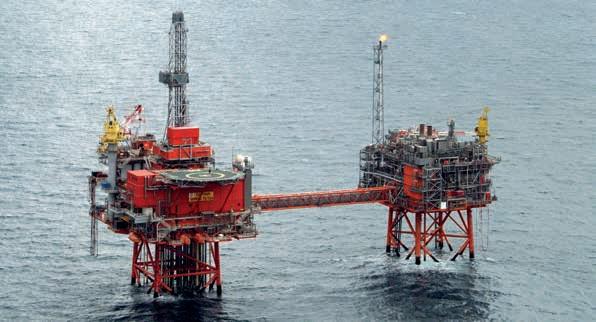
28 FIRST BREAK I VOLUME 41 I APRIL 2023 INDUSTRY NEWS
Captain EOR platform.
CGG reports Q4 net income of $47 million
CGG reported a fourth quarter net income of $47 million on revenues of $268 million compared to a net loss of $28 million on revenues of $471 million in Q4 2021.
Fourth quarter operating profit of $84 million compared with an operating loss of $23 million in Q4 2021.
Q4 Segment revenue was $319million, up 6% and up 7% proforma year-on-year.
Digital, Data and Energy Transition (DDE) segment revenue was $215 million, up 4% year-on-year. Geoscience revenue was $69 million, down 26% year-onyear. Geoscience commercial activity is increasing worldwide with high level of bid submissions at the end of December 2022, up 18% year-on-year, driven by a 58% increase in OBN processing bids, said CGG. At the end of December 2022, order intake in Geoscience was up 26% year-onyear. Earth Data revenue was $145 million, up 28% year-on-year.
In Q4, it had one vessel completing a program offshore Brazil. Prefunding revenue of Earth Data projects was at $67 million and prefunding rate was 264%. Earth Data after-sales were $78 million this quarter, up 43% year-on-year sustained by sales in South America, Gulf of Mexico and the North Sea.
Sensing and Monitoring (SMO) segment revenue was $104 million, up 10% yearon-year. Land equipment sales represented 60% of total sales. Marine equipment sales represented 21% of total sales. ‘OBN market for shallow water application remains active, especially in the Middle East. Marine market for streamers is still limited to equipment upgrades and spare streamer sections deliveries.’ Downhole equipment sales were $7 million. Sales from Beyond the Core businesses were $14 million, significantly up year-on-year and included a contribution from the newly acquired Geocomp busi-
ness. SMO segment operating income was $12 million, a 12% margin.
Full-year group net income was $43 million on revenues of $927 million compared with a group net loss of $180 million on revenues of $1.06 billion in full-year 2021.
Sophie Zurquiyah, CGG CEO, said: ‘I am pleased to see our strong Q4 financial performance delivering higher than anticipated multi-client data and equipment sales. For CGG, 2022 was a year of continued high market volatility and transition with Beyond the Core revenue contributing 8% of total revenue. We are entering 2023 with improved visibility thanks to our higher backlog and cash generation. Looking forward, our core businesses are expected to grow, enabling us to further develop our Beyond the Core businesses and transform CGG into a global technology and HPC leader.’
Sercel sells WiNG land seismic solution to Sinopec
Sercel has sold four WiNG wireless land nodal acquisition systems to the Chinese energy company Sinopec.
The deal with the long-standing key customer includes acquisition systems for 35,000 field units. The equipment is being deployed on a production survey in the East of China.
As a wireless and compact solution, WiNG is designed for difficult-to-access environments, said Sercel. With its Pathfinder transmission management technology, operators can view the entire acquisition spread in real time to ensure the most comprehensive and efficient quality control, the company added.
Emmanuelle Dubu, Sercel CEO, said: ‘We are particularly proud to see the increased commercial success of our innovative WiNG nodal solution, especially for use in complex terrains such as mountains, marsh and forests.’
Sercel sold 25,000 channels of its 508XT system to Sinopec in February.
Masdar invests in geothermal projects in Indonesia
The UAE renewable energy company Masdar is entering the geothermal energy sector in Indonesia through a strategic investment in Pertamina Geothermal Energy (PGE).
Dr Sultan Al Jaber, UAE minister of industry and advanced technology, and chairman, Masdar, said, ‘Through its investment in PGE, Masdar is demonstrating its continuing commitment to Indonesia’s energy transition.’
Ahmad Yuniarto, chief executive officer, PGE, said, ‘With the largest geothermal capacity globally. we are endeav-
ouring to develop 600 megawatts (MW) in additional installed capacity over the next five years to support Indonesia’s renewable energy mix.’
Mohamed Jameel Al Ramahi, chief executive officer, Masdar, said, ‘Masdar’s strategic investment in PGE will complement our already strong footprint in Indonesia, the world’s second largest geothermal market.’
Indonesia has a goal of increasing its installed geothermal capacity from 2.8 gigawatts (GW) in 2022 to 6.2 GW by
2030. The Indonesian government has a target of renewables providing 23% of the energy mix by 2023.
PGE has been operating geothermal facilities in Indonesia for the last 40 years. Masdar is already developing the region’s largest floating solar facility – the 145-MW Cirata Floating Solar PV Plant in Indonesia – and last year signed an agreement with Tuas Power, EDF Renewables, and PT Indonesia Power to explore development of up to 1.2 GW solar capacity in Indonesia for export to Singapore.
FIRST BREAK I VOLUME 41 I APRIL 2023 29 INDUSTRY NEWS
Geoscience revenue will be boosted by investment in oil and gas, says Rystad
Geoscience companies are set to benefit as the offshore oil and gas sector prepares for its highest growth in a decade in the next two years, with $214 billion of new project investments lined up, according to Rystad Energy.

Its research shows that annual greenfield capital expenditure (capex) broke the $100 billion threshold in 2022 and will break it again in 2023 – the first breach for two straight years since 2012 and 2013.
As global fossil fuel demand remains strong and countries look for carbon-friendly production sources, offshore is back in the spotlight. Offshore activity is expected to account for 68% of all sanctioned conventional hydrocarbons in 2023 and 2024, up from 40% between 2015 and 2018. In terms of total project count, offshore developments will make up almost half of all sanctioned projects in the next two years, up from just 29% from 2015-2018.
activities in the Middle East. For the first time, offshore upstream spending in the region will surpass all others, lifted by mammoth projects in Saudi Arabia, Qatar and the UAE. The area’s offshore spending growth looks set to continue at least for the next three years, growing from $33 billion this year to $41 billion in 2025. These countries are tapping into their vast offshore resources to meet rising global oil demand, backed by the necessary capital and infrastructure to outpace other producers, said Rystad.
‘Offshore oil and gas production isn’t going anywhere, and the sector matters now possibly more than ever. Offshore operators and service companies should expect a windfall in the coming years,’ said Audun Martinsen, head of supply chain research, Rystad Energy.
Although the Middle East is leading the way, South America, the UK and Brazil are just slightly behind. Investments in the North Sea in particular from the UK and Norway will rise in the next two years. UK offshore spending is set to jump 30% this year to $7 billion, while Norwegian investments will hit $21.4 billion, an increase of 22% over 2022. Brazilian upstream spending is projected to approach $23 billion this year, with Guyana investments totalling $7 billion. In North America, spending on offshore in the US will top $17.5 billion and $7.3 billion in Mexico.
gest contractors. Despite some optimism in 2017-19, the market did not really take off as oil and gas producers maintained strict cash discipline and some segments in the oil and gas supply chain struggled with continued overcapacity, said Rystad.
Despite the risk that another downturn in the oil and gas sector may occur after 2025, oilfield service suppliers should be able to balance out the downturn by branching out into other parts of the wider energy market – and in so doing, expanding the overall target market for contractors.
‘While we expect the next seven years to provide a strong market for energy services, companies still have to improve their economics to make it a feast. Luckily, overall utilisation is improving rapidly as suppliers are careful not to overinvest in more capacity as rigs, vessels, plants, and other units in the supply chain are affected by natural wear and tear. The result is better pricing for suppliers – the past 12 months have driven up prices for offshore rigs, land rigs, frac fleets, proppant, OCTG, vessels, and subsea infrastructure to levels not seen in a decade.
‘All signs point towards 2022 being the start of another super cycle for the energy services sector,’ said Audun Martinsen, partner and head of energy service research at Rystad Energy.
New investments will be a boon for the offshore services market, including geoscience companies, with supply chain spending to grow 16% in 2023 and 2024, a decade-high year-on-year increase of $21 billion, said Rystad. Offshore rigs, vessels, subsea and floating production storage and offloading (FPSO) activity are all set to flourish.
One of the leading global drivers is the sizeable expansion of offshore
Brazil state giant Petrobras plans to deploy 16 FPSOs across six fields before the end of this decade, while growth in the Guyanese Stabroek Block will also contribute to regional expansion. In longterm forecasts, Middle Eastern growth is set to continue, if not accelerate, while South American spending will slow in 2025.
Meanwhile, Rystad expects the global market for oil and gas contractors to rise to a peak of $1 trillion in 2025 and remain at high levels for several years thereafter. Overall oil and gas spending will stay above $920 billion annually on average for the 2022-2028 period.
From its peak in 2014 to the trough in 2021, revenue fell almost 60% for the big-
Last year was a turning point with the post-pandemic recovery, record-high gas prices and strong oil prices, allowing oil and gas companies to lift their oil and gas investments by 20%, said Rystad.
‘Energy security concerns have prompted petroleum producers to raise production and contract goods and services from suppliers. Prices that suppliers could charge surged by double-digit percentages,’ said Rystad. ‘After the rebound in 2022 we are entering a very promising 2023, with potential for 13% growth both for oil and gas investments and 10% for low-carbon investments.’
Rystad added that contractors and service companies would also be boosted by a global rise in low carbon investments of $60 billion in 2023.
30 FIRST BREAK I VOLUME 41 I APRIL 2023 INDUSTRY NEWS
Oil and gas spending is set for a big increase.
TGS expands wind power modelling to US East Coast
modelling uncertainties and cycle times for those embarking on site assessment activities, it added. It will further validate TGS’ high-resolution numerical weather prediction (NWP) model data coverage. ‘Similarly, those companies working on wind development offshore Massachusetts can acquire additional data to de-risk Final Investment Decisions (FIDs) or enhance Construction and Operations Plans (COPs),’ said TGS.
ENERGY TRANSITION BRIEFS
Offshore flaring in the UK North Sea has been cut in half to 22 billion bcf after four consecutive years of reductions driven by tough measures, new analysis shows.
TGS has expanded its multi-client offshore wind and metocean measurement campaign off the US East Coast.
In addition to its floating LiDAR buoy in the New York Bight, TGS has announced four further deployments: one offshore Massachusetts, two covering the impending Central Atlantic lease round, and another buoy in the New York Bight area to further enhance its data collection and wind modelling in an area that will open for bidding in 2024.

‘The TGS multi-client approach, where multiple customers can subscribe to the same floating LiDAR data, offers offshore wind stakeholders the added benefits of reduced development costs, timelines, and, most importantly, the ability to minimise energy uncertainty further. In the Central Atlantic, the TGS-deployed floating LiDAR buoys will provide data and insights on a subscription basis to those pursuing wind development opportunities allowing the de-risking of prospects well before the lease bidding process,’ said TGS.
‘The floating LiDAR data will be the only modern and full dataset covering the Central Atlantic lease areas, due to open for bidding in early 2024. Access to such data at this early stage is expected to significantly enhance the decision-making ability of all stakeholders investing in the wind development future of this region,’
In the New York Bight, TGS’ first buoy in the region is performing very well with high data recovery rates and measuring aspects of the wind resource, said TGS. Adding a second TGS floating LiDAR buoy will further reduce wind and ocean
‘In all five deployments, TGS is utilising one of the world’s most advanced floating LiDAR systems with the highest level of accuracy (stage 3 validation) from EOLOS,’ the company added. Throughout each buoy’s deployment campaign, data will be acquired continuously with the data stream quality controlled and made available to customers daily via the Wind AXIOM platform, TGS’ site evaluation and wind data analytics tool. In addition to wind speed measurements, the data package includes critical metocean and environmental data such as significant wave heights, ocean current profiles, and acoustic monitoring of whales, dolphins, birds, and bats.
Using aggregated data inputs, including wind models and measurements, Wind Axiom instantly accesses and processes vast amounts of site-specific data via the cloud, said TGS. ‘This functionality allows wind developers and stakeholders to constrain the most influential factors affecting the viability of offshore wind projects and answer questions related to energy output, annual revenue, supply fluctuations, and more. Wind model inputs are complemented by a range of cost-influencing factors, creating a tool that improves the quality and speed of decisions by offering a configurable experience for various participants in the offshore wind market,’ said TGS.
Jan Schoolmeesters, EVP of Digital Energy Solutions at TGS, said: ‘The costs to deploy offshore measurements have been prohibitive and often don’t make sense from a risk-reward perspective. With the multi-client floating LiDAR program, TGS hopes to provide the best data earlier for greater risk reduction throughout the project.’
The European Commision has approved a $1.2 billion Danish scheme to develop carbon capture and storage technologies. Money will be awarded through competitive tendering in 2023. Under a 20-year contract, beneficiaries will capture and store an annual minimum of 0.4 million tonnes of CO2 from 2026. Maximum aid will be $59 million a year.
Spending on low-carbon projects will increase by $60 billion this year, 10% higher than 2022, led by wind developments but helped by a significant rise in funding for hydrogen and carbon capture, utilisation and storage infrastructure, Rystad Energy research shows. Spending growth is a downturn from 20% rises in recent years.
The US Bureau of Ocean Energy Management (BOEM) will update regulations for clean energy development on the US Outer Continental Shelf (OCS). The regulations will streamline processes, clarify ambiguous provisions and enhance compliance provisions in order to decrease costs. The proposed reforms are expected to save developers $1 billion over a 20-year period.
ADNOC has begun work on the world’s first fully sequestered carbon dioxide (CO2) injection well in a carbonate saline aquifer. The project is expected to begin injecting CO2 in Q2 2023.
The UK Crown Estate has leased six offshore wind projects which have the potential to generate c.8GW of renewable electricity. RWE Renewables has won the Dogger Bank southeast and southwest projects off the northeast coast. TotalEnergies and Coro Energy have won a lease for the eastern region. EB-W and BP has won two leases while Cobra and Flotation Energy have won one lease in the Northern Wales and Irish Sea area.
FIRST BREAK I VOLUME 41 I APRIL 2023 31 INDUSTRY NEWS
TGS US East Coast LiDAR locations, March 2023.
BRIEFS
Shearwater GeoServices has won a 3D streamer survey from Korea National Oil Corporation (KNOC) off the coast of South Korea. The 1200 km2 survey marks Shearwater’s third project for the South Korean national oil and gas company.
The US Bureau of Ocean Energy Management (BOEM) has launched Gulf of Mexico Oil and Gas Lease Sale 259 offering 13,600 blocks on 73.3 million acres. It has also published details Gulf of Mexico Oil and Gas Lease Sale 261 scheduled for September, offering 13,620 blocks on 73.4 million acres.
SeaBird Exploration has reported fourth quarter revenues of $8.9 million and EBITDA of $2.3 million with a net loss of $1.5 million. Net interest-bearing debt is $15.4 million. Vessel utilisation was 81%. The company is expected to make first quarter 2023 revenues of $4-5 million.
Guyana’s first offshore licensing round has attracted bids 10 companies including Shell, Petrobras and Chevron. Final deadline for bids is 14 April 2023. Contract awards are expected by 31 May. The South American country is offering 14 blocks for tender in the shallow and deepwater areas offshore Guyana.
INEOS Energy is entering US oil and gas production for the first time with the acquisition of a portion of Chesapeake Energy’s oil and gas assets in the Eagle Ford shale, south Texas, comprising 2300 wells producing 36,000 BOED, for $1.4 billion. The acquisition, which includes production and exploration leases across 172,000 net acres, is expected to complete in Q2.
The Norwegian Ministry of Petroleum and Energy has received applications from five companies for carbon capture utilisation and storage projects in the North Sea. By the deadline on 22 February, applications had been received from Equinor; Neptune Energy; Storegga; Sval Energi and Wintershall Dea will be awarded acreage in the first half of this year.
CGG appoints Jérôme Serve as chief financial officer
CGG has appointed Jérôme Serve as group chief financial officer, succeeding Yuri Baidoukov who is leaving after four and a half years for family reasons.
Since 2019, Serve has been CFO of the interiors division of Forvia/Faurecia, a leading automotive supplier that he co-piloted through a complex macro-economic environment while continuing to develop growth areas in the company such as intelligent cockpit, said CGG.
Serve started his career in research in the petroleum engineering department
of Stanford University before joining TotalEnergies as a reservoir engineer in Abu Dhabi and the UK. He moved into finance as part of the oil and gas corporate finance team of ABN Amro, and then joined the M&A and financing team of Shell. In 2012, he became group CFO of Butagaz where he was instrumental in turning around the LPG business and transforming the group into a multi-energy distributor, said CGG.
Serve graduated from Stanford University and from the l’ESCPI (Paris).
Petrobras signs deal with oil majors to work on renewables
Petrobras has signed agreements with Shell and Equinor to develop renewables projects in Brazil
Petrobras and Shell have signed a five-year agreement to identify upstream opportunities on reducing carbon emissions.
This agreement focuses on exploration opportunities in and beyond the presalt, including the Equatorial Margin with an emphasis on renewables and carbon capture, utilisation and storage (CCUS). Petrobras and Shell are also aiming to establish projects to preserve and restore biodiversity, with the goal of issuing credits to offset carbon emissions. In addition, the companies will also work together on social investment projects.
In 2020 Petrobras and Shell signed a technical cooperation agreement. Currently, Petrobras and Shell are working together on assets in Brazil, such as Tupi, Sapinhoá, Mero and Atapu, among others.
Meanwhile, Petrobras and Equinor have expanded their cooperation agreement to assess the technical, economic, and environmental feasibility of seven offshore wind power generation projects off the Brazilian coast with the potential to generate up to 14.5 GW.
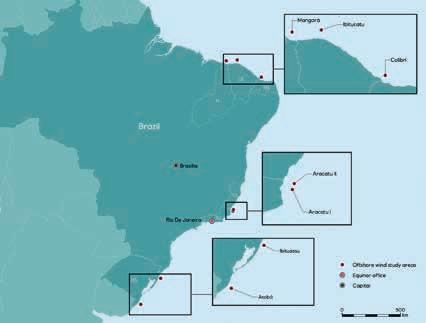
‘We will combine our world-renowned offshore technological innovation capacity and our experience in the Bra-
zilian electricity generation market with Equinor’s expertise in offshore wind projects in several countries’, said Petrobras president and CEO Jean Paul Prates.
The agreement is the result of the partnership signed between Petrobras and Equinor in 2018 – its scope expanded beyond the two initially planned wind farm opportunities – Aracatu I and II (on the coastal border between the states of Rio de Janeiro and Espírito Santo).
In addition to these two projects, the five-year agreement provides for an assessment of the viability of seven wind farms including Mangara (on the coast of Piauí); Ibitucatu (coast of Ceará); Colibri (on the coastal border between Rio Grande do Norte and Ceará) as well as Atobá and Ibituassu (both on the coast of Rio Grande do Sul).
32 FIRST BREAK I VOLUME 41 I APRIL 2023 INDUSTRY NEWS
Equinor will be involved in seve windfarms.
REGISTRATION OPEN!









































































































































































































































































































































WWW.IMOGCONFERENCE.ORG
Special Topic
UNCONVENTIONALS AND PASSIVE SEISMIC
Large-scale exploration of shale oil and gas in America, in particular, has driven innovation in the seismic characterisation of unconventional reservoirs. Now there is an added imperative to maximise such sources of energy given the need to provide alternative sources of energy in the West as a result of sanctions against Russia because of its invasion of Ukraine. The latest techniques to predict the performance of multi-fractured horizontal wells will be showcased.
Meanwhile, interest in passive seismic techniques, particularly microseismic monitoring, is continuing to grow. The technique also lends itself to the monitoring of potential reservoirs for CO2 capture, storage and utilisation reservoirs for the energy transition.
Tom Davis discusses how industry and academia work together to bring about innovation in reservoir characterisation.
Paul A. Nyffenegger et al summarise results from a year of monitoring of the Newell County Facility using the SADAR permanent array network, including an updated seismic velocity model determined from ground truth calibration events and quantified estimates of system performance.
Ruud Weijermars highlights how Gaussian solutions of the pressure-diffusion equation can provide quick answers for optimising well-designed parameters in unconventional shale gas and liquids development projects.
Roy P. Bitrus et al present a hydrocarbon probability map showing data informed zones with delineated hydrocarbons.
Stephen A. Sonnenberg illustrates the micro-seismic response observed in several multistage hydraulic stimulation case studies from the Bakken Formation of the Williston Basin.
Victor Gabrilyants et al presents a study of the processes affecting the saturation of the Achimov formation as a way of derisking exploration.
Submit an article
First Break Special Topics are covered by a mix of original articles dealing with case studies and the latest technology. Contributions to a Special Topic in First Break can be sent directly to the editorial office (firstbreak@eage.org). Submissions will be considered for publication by the editor.
It is also possible to submit a Technical Article to First Break. Technical Articles are subject to a peer review process and should be submitted via EAGE’s ScholarOne website: http://mc.manuscriptcentral.com/fb
You can find the First Break author guidelines online at www.firstbreak.org/guidelines.
Special Topic overview
January Land Seismic
February Digitalization / Machine Learning
March Reservoir Monitoring
April Unconventionals and Passive Seismic
May Global Exploration Hotspots
June Securing a Sustainable Future Together
July Modelling / Interpretation
August Near Surface Geo & Mining
September Reservoir Engineering & Geoscience

October Energy Transition
November Marine Acquisition
December Data Management and Processing
More Special Topics may be added during the course of the year.
50 FIRST BREAK I VOLUME 41 I APRIL 2023
P and S wave seismic imaging are needed in CCS reservoir monitoring
Bob Hardage, from the Bureau of Economic Geology at the University of Texas at Austin, explains why S-wave data are essential for monitoring CO2 storage reservoirs.
Both compressional P-wave and shear S-wave data are essential in Carbon Capture and Storage (CCS) activities to better understand the subsurface structure, rock and fluid properties. Proper monitoring of a CO2 storage reservoir and its immediate environment requires repeated, time-lapse seismic data surveys to monitor changes in stress and rock/fluid conditions.
Different propagation schemes
When P and S seismic waves propagate in the subsurface, they travel with different velocities that depend on how their particle-displacement vector is oriented relative to their travel path direction. The faster wave is the compressional, or P, wave, and its particle-displacement vector is oriented in the same direction as the P propagation direction. The second and slower wave is the shear or S-wave. In contrast to the P-wave, the particle-displacement vector of an S-wave is perpendicular to the direction of S propagation.
Different sensitivity to rock and fluid
Because a vertically travelling P-wave probes rocks with a vertically oriented displacement vector, but a vertically traveling S-wave probes the same rocks with a horizontal displacement vector, P and S waves detect different rock properties. Also, P-wave reflectivity is influenced by what type of fluid (liquid or fizz gas) occupies pore spaces in rocks, but S-waves probe only the rock matrix and do not react to alterations in pore fluid.

Insight into stress conditions and geology
S waves probe rocks with 2 modes: fast-S and slow-S modes. These two modes propagate with the same velocity when the medium is isotropic (Figure 1). Particularly important to CO2 reservoir
monitoring is that laboratory measurements and field-data examples show that these two modes travel with different (fast and slow) velocities in rocks that are anisotropic, which would be areas of subtle faults, fractures, structured pores, etc. As rock anisotropy increases (decreases), the difference between fast-S and slow-S velocities increases (decreases). Of particular importance is the fact the displacement vector of the fast-S mode is oriented in the azimuth of SHmax stress, and the displacement vector of the slow-S mode is oriented in the azimuth of SHmin horizontal stress (Figure 1).
Monitoring changes in local stress conditions during CO2 injection and storage
Each injection of liquid CO2 increases pore pressure in a storage reservoir, increasing horizontal stresses by amounts ranging from 0.5 to 0.8 of the magnitude of the increase in pore pressure. A huge amount of evidence of this behaviour can be found by entering the term pore-pressure/stress coupling in a Google search. Presently, the primary objective in managing CO2 storage reservoirs is to avoid structural failures that will create regional seismicity. Fast-S and slow-S data appear to be the best tools for recognising when SHmax and/or SHmin stresses are approaching dangerous levels.
Data processing and interpretation challenges
Wave propagation through the subsurface is complex, with numerous down-going and up-going reflected waves interacting with each other. The presence of fast-S and slow-S wave modes further complicates this wavefield complexity. The fact that fast-S and slow-S displacement vectors are oriented, respectively, in the azimuths of SHmax and SHmin horizontal stress provides the invaluable ability to monitor SHmax and SHmin stress behaviours as separate and independent seismic images. This dual imaging of the stress fields that can cause reservoir rupture is unique to fast-S and slow-S wavefields. This fact illustrates why CCS storage reservoirs must be imaged with both P and S reflection data.
Conclusions and next episode
Three images of a CO2 storage reservoir (P, fast-S, slow-S) must be involved in CO2 monitoring. Each image places key features of a reservoir at different image times. It will be essential to depth register each data point in these images to equivalent XYZ coordinates in reservoir space. Machine learning (ML) is expected to be essential to achieve accurate image registrations. Neurons created in ML analyses define minute details in the fabric of seismic wavefields. Depth registering these neurons may be optimal for monitoring stress dynamics in CO2 reservoirs.
Views expressed in this article are solely those of the author, who can be contacted at gwenola.michaud@cognite.com
FIRST BREAK I VOLUME 41 I APRIL 2023 93 FEATURE: WHATSUP!
Figure 1 Schematic representation of down-going S waves reaching a deep, stressed reservoir. In such anisotropic medium, the S waves split in a fast and slow shear wave, orientated along the maximum horizontal stress (SHmax) and minimum horizontal stress (SHmin), respectively.
CALENDAR OF EVENTS
3-7 SEPTEMBER 2023
Near Surface Geoscience Conference & Exhibition 2023
Edinburgh, United Kingdom www.eagensg.org
April 2023
2-6 Apr SAGEEP 2023 www.eegs.org/sageep-2023
New Orleans United States
17-20 Apr The Open Group Summit: EA for Sustainability events.opengroup.org/website/51925/ London United Kingdom
19-20 Apr Seismic 2023 www.spe-aberdeen.org/events/seismic-2023
23-28 Apr EGU General Assembly 2023 www.egu23.eu Vienna Austria
May 2023
16-18 May Energy Geoscience Conference 2023 www.energygeoscienceconf.org Aberdeen United Kingdom


31 May1 Jun DGMK/ÖGEW Spring Conference 2023
Exploring the subsurface potential - make the energy transition happen https://dgmk.de/en/events/dgmk-oegew-early-2023-exploring-the-subsurface-potential-make-energytransition-happen/
June 2023
5-8 Jun 84th EAGE Annual Conference & Exhibition www.eageannual.org
July 2023
9-14 Jul Goldschmidt2023 2023.goldschmidt.info
August 2023
15-16 Aug 2 nd EAGE Workshop on Fluid Flow in Faults and Fracture - Modelling, Uncertainty and Risk www.eage.org Canberra Australia
16-18 Aug First EAGE Conference on Deepwater Equatorial Margin: New Energy Frontier for South America
“From exploration to Production with social sustainability” www.eage.org
22-23 Aug EAGE Workshop on Unlocking Carbon Capture and Storage Potential www.eage.org

Rio de Janeiro Brazil
Kuala Lumpur Malaysia
94 FIRST BREAK I VOLUME 41 I APRIL 2023 CALENDAR EAGE Events Non-EAGE Events
Aberdeen United Kingdom
Celle Germany
Vienna Austria
Lyon France
September 2023
3-7 Sep Near Surface Geoscience Conference & Exhibition 2023 www.eagensg.org
10-15 Sep IMOG 2023
31st International Meeting on Organic Geochemistry www.imogconference.org
12-13 Sep EAGE Conference on the Future of Energy - Role of Geoscience in the Energy Transition www.eage.org
18-20 Sep Seventh EAGE Borehole Geophysics Workshop www.eage.org
18-20 Sep Second EAGE Seabed Seismic Workshop www.eage.org
20-21 Sep PESGB/HGS Africa Conference 2023 https://africa.pesgb.org.uk/
20-22 Sep First EAGE Conference on Offshore Energy Resources in the South Atlantic www.eage.org
27-29 Sep IPETGAS 2023 www.ipetgas.org/
October 2023
Oct Hydrocarbon Prospectivity of the Northern Emirates www.eage.org
2-4 Oct 22 nd European Symposium on Innovative and Optimised Resource Utilisation (IOR+) www.eage.org
5-6 Oct First EAGE Workshop on Hydrogen & Carbon Capture Sequestration in LATAM www.eage.org
17-18 Oct EAGE Workshop on Data Science - From Fundamentals to Opportunities www.eage.org
19-20 Oct First EAGE Workshop on Water Footprint www.eage.org
November 2023
Nov Fourth SPE/EAGE Geosteering and Well Placement Workshop www.eage.org
2-3 Nov 2 nd EAGE/Aqua Foundation Indian Near Surface Geophysics Conference & Exhibition www.eage.org
6-9 Nov GET 2023 4th EAGE Global Energy Transition Conference & Exhibition www.eageget.org
11-16 Nov Second EAGE Workshop on Geothermal Energy in Latin America: Worldwide Opportunities www.eage.org
21-22 Nov 2 nd EAGE Workshop on Quantifying Uncertainty in Depth Imaging www.eage.org
Edinburgh United Kingdom

Montpellier France
Kuala Lumpur Malaysia
Milan Italy
Milan Italy
London United Kingdom
Montevideo Uruguay
Ankara Turkey
Ras Al-Khaimah UAE
The Hague The Netherlands
Medellin Colombia
Kuala Lumpur Malaysia
Bogota Colombia
Abu Dhabi UAE
New Delhi India
Paris France
Guanacaste Costa Rica
Kuala Lumpur Malaysia
Dhahran Saudi Arabia 27-30 Nov Fifth EAGE Conference on Petroleum Geostatistics www.eage.org
21-23 Nov Fifth EAGE Borehole Geology Workshop www.eage.org
28-30 Nov EAGE/ AAPG Hydrocarbon Seals Workshop www.eage.org
30 Nov1 Dec Third EAGE Workshop on Mineral Exploration in Latin America: “The Role of Mining in the Energy Transition“ www.eage.org
EAGE Events Non-EAGE Events
Porto Portugal
Dhahran Saudi Arabia
Santiago de Chile Chile
FIRST BREAK I VOLUME 41 I APRIL 2023 95 CALENDAR
INNOVATIVE AND OPTIMISED RESOURCE UTILISATION
2–4 OCT 2023 THE HAGUE, THE NETHERLANDS
SHARE YOUR RESEARCH, CONNECT WITH PROFESSIONALS AND DISCOVER THE NEXT STEPS IN OIL RECOVERY
SUBMIT YOUR ABSTRACT TODAY!
VISIT WWW.IOR2023.ORG

































































































































































































































































































































































































































































































































































































































































































































































































































































































































































































































































































































































































































































































































































































































































































































































































































































































































































































































































































































































































































































































































































































































































































































































































































































•
•
•
•







































































































































































































































































































































































































































































































































































































































































































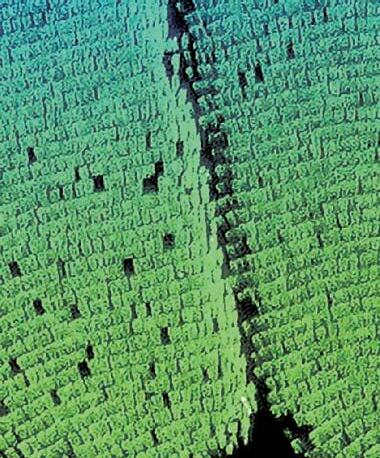


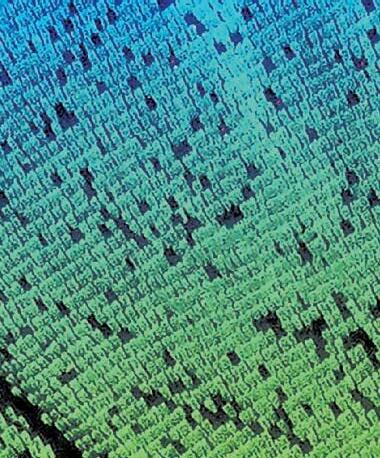


SUBMIT YOUR ABSTRACT! EAGEGET.ORG TOPICS
NOVEMBER 2023
PARIS, FRANCE HOSTED BY
OFFSHORE RENEWABLE ENERGY
CCUS
ENERGY STORAGE
GEOTHERMAL ENERGY
INTEGRATION
CROSS-USES
6-9
•
•
•
•
•
•
•
ENVIRONMENT & SUSTAINABILITY
SOLUTIONS & SOCIETY
GEORESOURCES IN THE FUTURE
EDUCATION & TRAINING


























3-7 SEPTEMBER 2023 | EDINBURGH, UK JOIN THE BRIGHT MINDS OF THE NEAR-SURFACE INDUSTRY! LAST CALL: SUBMIT YOUR ABSTRACTS BY 25 APRIL! E u r o p e a n M e e t i n g o f E n v i r o n m e n t a l a n d E n g i n e e r i n g G e o p h y s i c s 29th C o n f e r e n ce o n G e o p h y s i c s f o r In f r a s t r u c tu r e P l an n i n g , M o n i t o r i n g a n d B I M 3rd C o n t r i b u t i o n t o E x p lo r a t i o n a n d M a n a g e m e n t o f G r o u n d w a t e r L a n d- U s e a n d N a t u r a l H a z a r d s u n d e r a C h a n g i n g C l i m a t e 2nd C o n f e r en ce o n H y d r o g e o p h y s i c s 1st Conference on Sub-surface Characterisation for Offshore Wind




































































































































































































































































































































































































































































































































































































































































































































































































































































































































































































































































































































































































































































































































































































































































































































































































































































































































































































































































































































































































































































































































































































































































































































































































































































































































































































































































































































































































































































































































































































































































































































































































































































































































































































































































































